Driver Reviews
Review: Callaway Big Bertha and Big Bertha Alpha Drivers
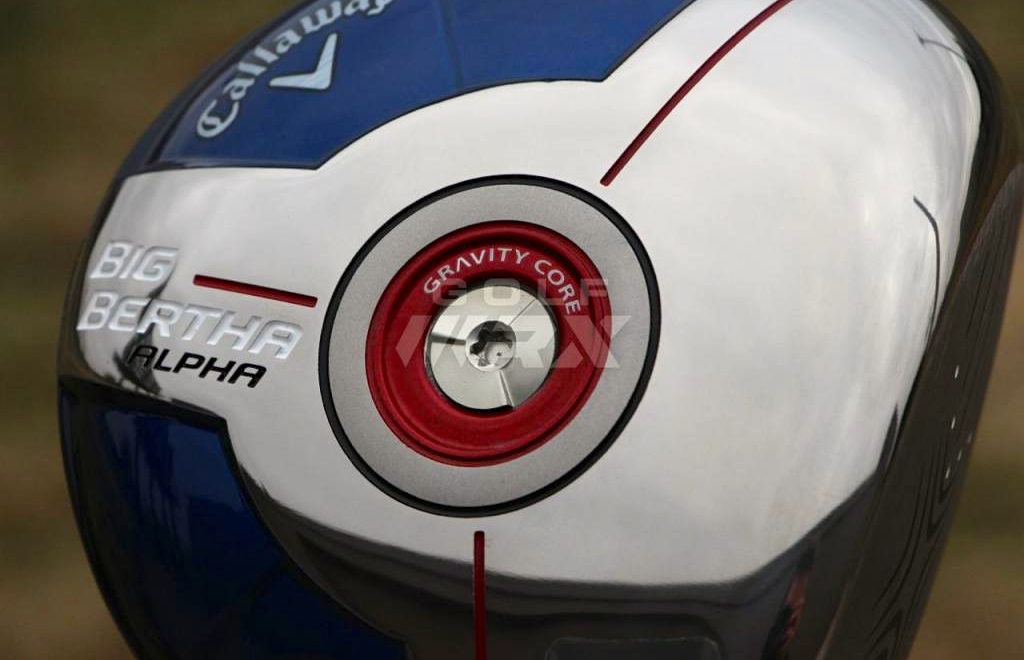
Pros: Callaway’s most adjustable drivers to date. Big Bertha Alpha’s Gravity Core offers the ability to adjust vertical center of gravity up or down to adjust spin independent of launch angle. Big Bertha’s Adjustable Perimeter Weighting maintains MOI and allows golfers to fine-tune their ball flight.
Cons: Both drivers are more expensive than the recently launched X2 Hot drivers. At $499, the Big Bertha Alpha might be out of reach for some golfers.
Bottom line: Both drivers are making their ancestors proud and living up to the Big Bertha name by delivering higher ball speeds and distance while advancing driver technology. They’re packed with innovative features and are more adjustable than any other driver Callaway has released, offering golfers of all skill levels the ability to fine-tune their launch conditions and maximize ball speed and distance.
Overview
In the last few months, Callaway has been bringing back some of the most iconic names in golf equipment history. The company started with the Apex irons, and now, Callaway is bringing back the name of the driver that is responsible for ushering in the modern era of metal woods: Big Bertha. I’m sure a lot of us remember when the original Big Bertha came out, and many GolfWRX readers probably owned (and still own) one. We could reminisce, but I don’t believe a trip down memory lane was Callaway’s goal. It is difficult to successfully bring back such a popular name, and we’re glad Callaway waited until they had a truly innovative product worthy of being called “Big Bertha.”
The Big Bertha Alpha, Callaway’s lowest-spinning driver, is designed for the better player looking for several adjustable features to fine-tune launch conditions by adjusting vertical center of gravity, loft, lie and directional bias.
[youtube id=”9joDgq69IDI” width=”620″ height=”360″]
The Big Bertha driver on the other hand, has more forgiveness, a larger sweet spot, and the ability to fine-tune the CG bias with Adjustable Perimeter Weighting. While golf clubs themselves don’t win tournaments, they certainly help, and the Big Bertha Alpha has already been in a winning bag on both the PGA and European tours.
[youtube id=”60d8jt50_m4″ width=”620″ height=”360″]
Unlike the original Big Bertha, which was comprised of only stainless steel (and later titanium), the new Big Bertha drivers are made up of eight different materials including carbon fiber, titanium, aluminum, tungsten and yes, steel. Callaway engineers managed to make all the materials work together to remove weight where you don’t need it, such as in the crown, and use it in places where it can be useful such as the Adjustable Perimeter Weighting or Gravity Core.
Gravity Core
One of the issues with adjustable drivers is that when you adjust the loft of the club, the spin rate also adjusts in a fixed relationship. For the first time, Callaway has created a way to adjust the vertical center of gravity through a movable weight system called Gravity Core.
One end of the Gravity Core is a heavy 12 gram Tungsten weight, while the other end weighs only 1.5 grams. The Gravity Core can be inserted into a carbon fiber tube that connects the sole to the crown and sits in the middle of the club head. Inserting the core with the heavy end down will push the center of gravity lower in the head and create a lower-spinning driver. Inserting the Gravity Core with the heavy side up will raise the driver’s center of gravity and offer additional forgiveness for shots high on the face and create a driver with intermediate spin.
Adjustable Perimeter Weighting
Callaway has been working for a long time on a sliding perimeter weight track and they decided to finally launch a production driver with the technology. The Big Bertha driver uses an 8-gram weight on a 5-inch sliding track positioned around the perimeter of the head allowing golfers to fine-tune their CG bias while also increasing the club’s MOI making it more forgiving.
Similar to the Optiforce and X2 Hot drivers, both drivers have the Advanced OptiFit hosel which allows golfers to optimize their launch conditions by adjusting the loft and lie independently. The loft of each driver can be adjusted up 2 degrees or down 1 degree. You can also set the drivers to neutral or draw, which makes the lie angle more upright and encourages a more leftward starting trajectory (for right-handed golfers). Changing the driver’s loft will change the face angle slightly, but most golfers will not notice a difference at address.
The Big Bertha driver is available in three different lofts: 9, 10.5 and 13.5 degrees, and comes stock with a 45.5-inch Mitsubishi Rayon Fubuki Z shaft in light, regular and stiff flexes. The head will weigh about 199 grams and the stock swing weight is D2.
The Big Bertha Alpha driver is available in one loft, 9 degrees. However, a 10.5-degree Big Bertha Alpha has been spotted on the professional tours and at the 2014 PGA Merchandise Show, making the release of the higher-lofted head a near certainty. The driver comes stock with a 45.5-inch 60-gram version of Mitsubishi Rayon’s Fubuki ZT shaft in light, regular, stiff and x-stiff flexes. The Big Bertha Alpha also has two pre-installed removable weights of 7 grams and 1 gram, which can be positioned in either the heel or toe of the driver to add draw or fade bias. Additional 3- and 5-grams weights are also provided to give golfers the ability to further fine tune swing weight and trajectory bias. The stock swing weight is D3.
The Big Bertha ($399) and Big Bertha Alpha ($499) will be available at retail on Feb. 14. The drivers can also be customized through Callaway’s uDesign program, which allows golfers to create a Big Bertha or Big Bertha Alpha driver with a primary color and accent color of their choosing (there are eight different color options) , as well as add a custom grip, shaft and laser etching.
Performance
I tested the clubs outside at a driving range during calm conditions. My playing swing speed is around 105 mph and I can max out a little above 110 mph, but for testing I was swinging with my normal playing speed. I tested both drivers stamped 9 degrees with the stock Fubuki stiff shaft. I also hit my current gamer during the same session to use as a baseline. My goal was to simply see if the ball flight matched Callaway’s claims.
I started with the Big Bertha in the stock loft and neutral perimeter weighting position. My first few shots with the driver had a really nice, effortless launch, with good carry and a straight to slight cut ball flight. Looking at the trajectory, I wouldn’t call it penetrating, but it also wasn’t spinning up too much.
Above: The face of the Big Bertha Alpha (bottom) is taller than the Big Bertha’s face.
I don’t want to take anything away from the work Callaway did on the Big Bertha, but I’ve been gaming the 440 Optiforce and more recently, the X2 Hot Pro, and I couldn’t wait to get my hands on the Alpha. I started in the standard loft and neutral lie with the Gravity Core in the low position. The first shot rocketed off the face. It felt more like the X2 Hot than the Optiforce and had a similar sound profile. The ball easily launched in the air, but had a more penetrating flight than the Big Bertha and a slight cut ball flight.
The next step in testing was to get on a FlightScope launch monitor and run a series of tests with multiple different settings so I once again headed out to Bentwater Golf Course in Acworth, Ga. I tested numerous configurations of both clubs including low and high Gravity Core in the Alpha and neutral and draw positions in the Adjustable Perimeter Weighting of the Big Bertha. I threw out true mishits and also looked at ball speed on shots off the toe and heel as well as high and low.
Performance: Big Bertha
On average, when compared to the Big Bertha Alpha, the Big Bertha generated statistically similar ball speeds, 2 more yards of carry but 2 yards less total distance. The launch angle was very similar but the Big Bertha generated 400 more rpm of spin on average. Almost every shot on the range was straight to a slight cut, but I could also hit draws and even a hook or two.
Even though the Big Bertha was spinning more than the Big Bertha Alpha in the high Gravity Core position, it was still producing 100 rpm less spin than the 440 FT Optiforce.
I also wanted to test the Adjustable Perimeter Weighting to see how it affects directional bias as well as stability. Since my shots all day had a slight cut to them, I slid the 8 gram weight toward the heel and into the draw position. The draw bias straightened the shots out immediately and I was back to hitting draws. Instead of only being able to swap weights in fixed positions, I was able to tell how effective it is to be able to slide the weight up and down on the track to add a little — or a lot — of draw or fade bias. Similar to the X2 Hot driver, which also has the Hyper Speed Face, shots off the heel only dropped on average 2 mph of ball speed. Shots off the toe resulted in a loss of 3 mph of ball speed during testing.
Performance: Big Bertha Alpha
There are four different adjustability options on this club including loft, lie, perimeter weights and Gravity Core. In the right hands, the Big Bertha Alpha can be optimized to fit virtually any swing and not just the swings of better players. I could’ve spent all day on the monitor testing out a variety of different configurations, but I focused on the neutral and draw-bias positions using the perimeter weights and also tested both the high and low Gravity Core positions.
Callaway’s biggest claim in the Alpha is that the Gravity Core, when the 12 gram Tungsten weight is placed in the low position, can decrease backspin up to 600 rpm in certain situations compared to having the weight positioned near the top of the club. Without adjusting anything else, positioning the Gravity Core weight low in the head actually dropped my spin by an average of 205 rpms compared to having the Gravity Core weight high in the face. The low core position also lowered the launch angle by 1 degree, the peak height by 3 yards, and generated an extra 3 yards of carry. Ball speed on mishits low on the face only lost about 1.5 mph of ball speed. Similarly, when the weight was placed in the up position, shots hit higher on the face lost less ball speed than when compared to shots hit high on the face with the Gravity Core in the low position.
Switching the perimeter weights worked as expected. This isn’t new technology, but it is yet another form of adjustability and I wanted to test it out. I was able to put the 7 gram weight in the heel position and the 1 gram weight in the toe position and immediately move the ball from being 4 yards right on average to 2 yards left.
Callaway has released some pretty impressive drivers over the last six to eight months. By comparison, my peak ball speeds with the Big Bertha Alpha ended up only about 1 mph over the X2 Hot and the 440 Optiforce. The peak ball speed with the Big Bertha was about even with the X2 Hot driver. That said, the adjustability of these clubs, especially the Alpha, makes the extra cost well worth it in my opinion. The Big Bertha Alpha is going in my bag and when I get back on a launch monitor and really fine-tune my launch conditions and I’m confident I’ll pick up even more speed, distance and even accuracy. The power of both of these drivers — but especially the Big Bertha Alpha — is in the fine-tuning adjustability. For those golfers willing and interested in taking advantage of the options, they will be happy they spent the extra money.
[wrx_buy_now oemlink=”http://www.callawaygolf.com/big-bertha-family/” oemtext=”Learn more from Callaway” amazonlink=”http://www.amazon.com/gp/product/B00GX7QEVI/ref=as_li_qf_sp_asin_il_tl?ie=UTF8&camp=1789&creative=9325&creativeASIN=B00GX7QEVI&linkCode=as2&tag=golfwrxcom-20&linkId=TABDJNWEMQ6ZEKXJ”]
Looks and Feel
Above: Callaway Big Bertha Alpha (left) and Big Bertha.
Looks are subjective, and the initial comments in the GolfWRX forum range from loving to hating the look. Personally, I think these clubs are stunning in person.
At address, the crown of both clubs is completely clean with the exception of a chevron alignment mark on the Big Bertha. The pearlescent paint on the crown looks almost black in low light, but in direct sunlight gives off a metallic shimmer and you can really tell it is a rich dark blue color. The shimmer is very subtle and doesn’t detract from the clean, traditional crown. The midnight blue on the crown starts to lighten as you move around to the sole, and that gradient creates a pretty cool depth effect. There is a nice balance of pure metal and pearlized paint on the sole and you can’t help but feel very American looking at the red, white and blue paint job.
The Big Bertha at address
At address, the Big Bertha appears noticeably larger than the Big Bertha Alpha, but it doesn’t feel like an oversized driver. The lighter colored shaft and the New Decade Whiteout grip complete the look. I’m happy Callaway brought back the New Decade Whiteout as the standard grip, just like they had on the FT Optiforce.
The Big Bertha Alpha at address
The Alpha has a slightly smaller footprint and more traditional shape at address that better players will likely find appealing. Both clubs are confidence-inspiring, but I prefer the slightly smaller footprint of the Big Bertha Alpha at address. The Gravity Core gives off a futuristic look and let’s be honest, did we expect anything else? “Gravity” is in the name. The font and design of the core’s screw look like something SpaceX might design and I love it. The whole sole of the Alpha really gives off a very modern, even futuristic look, with all design lines directing the eyes back to the Gravity Core.
The face of both drivers feel really solid at impact and very similar to the X2 Hot Drivers. The face feels springy off the sweet spot and offers good feedback on mishits. Both clubs also feel very easy to hit. I still prefer the sound of the FT Optiforce to the sound of the Big Bertha drivers. Both Big Bertha drivers have a louder, more firm sound at impact and I prefer slightly less initial pop and more reverberation. That said, feel and sound are extremely subjective so give them a hit and see what you think.
Bottom Line
Bertha is back. Yes, Callaway’s marketing team is blanketing the globe with that phrase, but it is true. I give Callaway a lot of credit for having the restraint to hold out bringing back this iconic name until a time when they could stamp it on a truly innovative new product. The Big Bertha Alpha, with the Gravity Core, is that product. Both drivers offer advanced adjustability, maximum forgiveness, and in the case of the Big Bertha Alpha, the ability to adjust spin rate independent of launch angle.
The Big Bertha and Big Bertha Alpha really are total performance drivers. High and low handicap golfers will be able to find something to like in both options.
- LIKE125
- LEGIT21
- WOW19
- LOL11
- IDHT6
- FLOP7
- OB11
- SHANK20
Driver Reviews
GolfWRX Spotlight: Tour Edge Exotics C721 driver

Tour Edge’s Exotics line of high-end golf clubs has been known for excellent fairway wood and hybrid performance over the years. The Chicago-based company has been consistently putting out high-quality products, and golfers are really taking notice. The new line of C721 drivers, fairway woods, and hybrids take yet another big leap forward from last year’s EXS line.
The new C721 driver takes a lot of technology from the 2020 EXS line and further refines and expands on it. I know it is a little cliche when companies say every model is their best ever, but Tour Edge is 100 percent right this time.
When unboxing the C721 the first thing I noticed was the much-improved looks and shape over the previous Tour Edge drivers. The biggest change to my eye is the added bulge, giving a more rounded and softened topline.
The overall shape of the C721 is slightly stretched from front to back, giving it just a hint of a triangular look. The Ridgeback is a titanium spine flanked by two carbon fiber wings that add stability and forgiveness to the head, but they can also work together and an additional aiming device to ensure you are lined up down the center of the fairway.
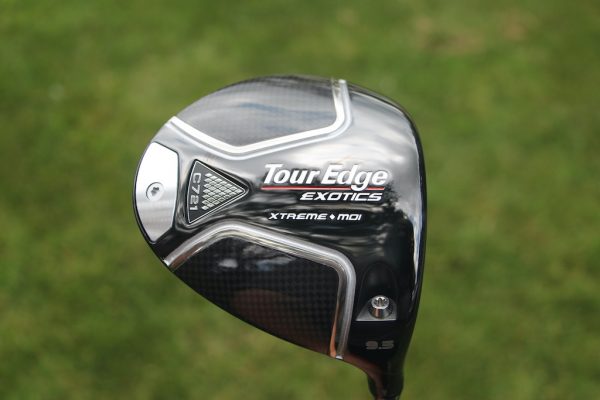
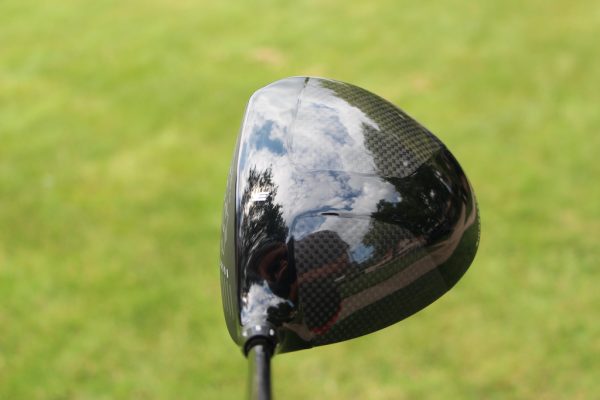
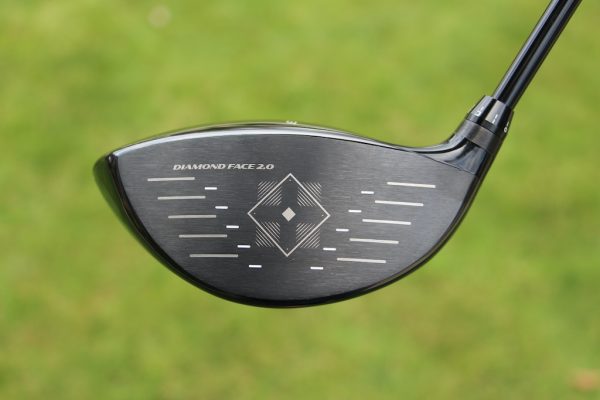
Getting the C721 out on the course is where you really start to appreciate all the technology that went into this driver. Well-struck shots are very long, very boring, and will hang with anything out on the market today. Center contact is rewarded with a long and very low spin shot that is just fun to hit.
The sound and feel are very solid, you can really feel the ball compress on the face as it leaves at high speed. The sound is more of a muted crack and much quieter than I anticipated. If you practice on an enclosed range your ears will thank you for your choice in drivers. Shots hit away from the center of the face retain a lot of ball speed and stay online really well.
My miss is low on the heel and those misses stayed in the air fairly well and went a good ways. Shots hit down on the heel or higher on the toe side still stay online really well due to the Ridgeback spine and rear weight. The C721 is just slightly higher than mid-launch for me, but the low spinning head never allowed my shots to balloon or rise even into the wind. I do wish the face was just a touch deeper as I had to play with my tee height in order to find the optimal setup. The better players will enjoy the neutral weighting and there seems to be very minimal draw built into the driver.
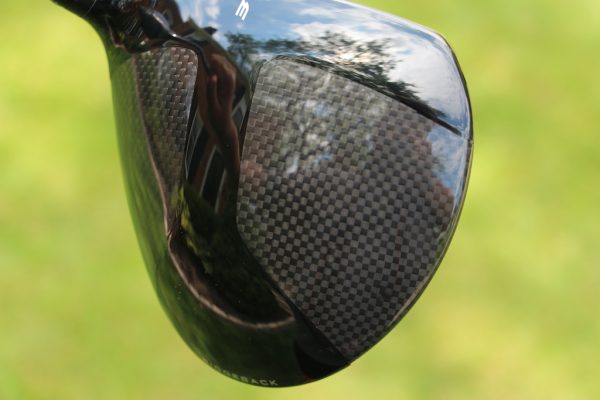
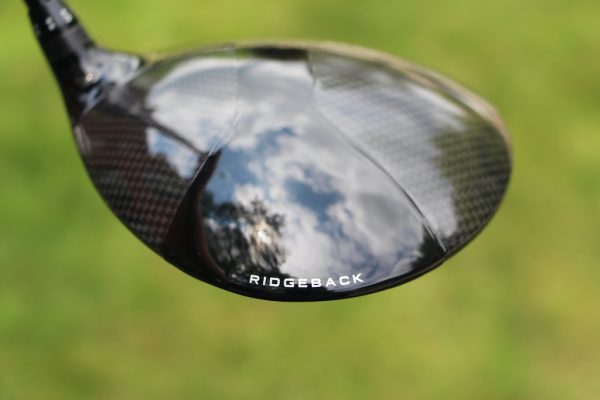
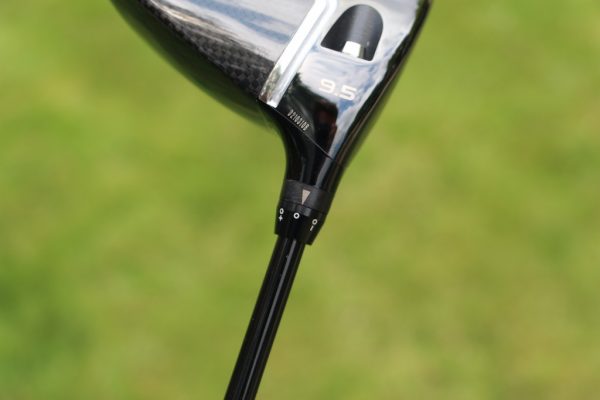
Overall, the Tour Edge Exotics C721 driver is a great club that will probably be overlooked by too many golfers. If you are looking for added distance, a lot of forgiveness and want to keep some money in your pocket, then you should seriously take a look at Tour Edge.
- LIKE103
- LEGIT12
- WOW6
- LOL2
- IDHT1
- FLOP1
- OB2
- SHANK5
Driver Reviews
Review: Ping’s G400 and G400 LST Drivers
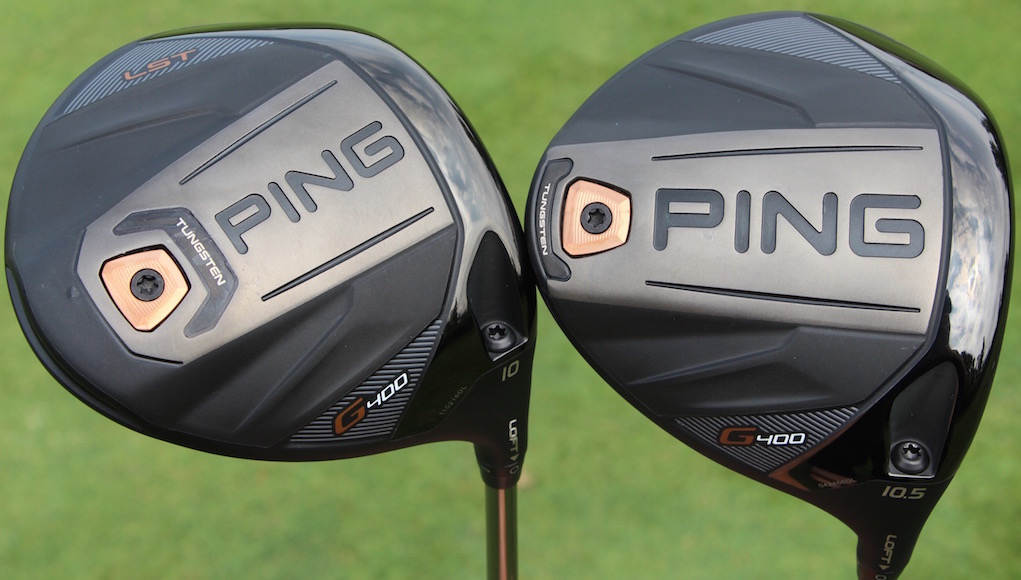
I still remember the first time I hit Ping’s G30 driver. It was July 2014, and I was at Ping’s HQ in Phoenix. Super low-spin drivers were all the rage at the time. With their forward center of gravity, they were helping golfers optimize their launch conditions beyond their wildest dreams: crazy high launch, ridiculously low spin. Many in the business, including myself, had one of these drivers and spent many launch monitor sessions trying to figure out how to get more distance from these high knuckleballs. The bad news was that forward-CG drivers, by nature, were really unforgiving. Bad shots were really short and crooked.
Before I knew the G30 was a big deal, Marty Jertson, Ping’s Director of Product Development, explained to me his vision for the perfect driver inside a conference room at Ping Headquarters. In his eyes, the perfect driver didn’t have the low, forward center of gravity (CG) that was being touted at the time. Its CG was located as low and as rearward in the driver head as possible, which he said would offer the best of both worlds: optimized launch conditions on good shots, as well as the best possible forgiveness on bad shots.
Building the perfect driver was a long way off (and still is), but Jertson was excited where Ping had landed with the G30. When it was released, the driver was a powerful testament to his vision. Its rear-CG design created great distance on good and bad shots, and it was also a very straight driver. The G30 sold incredibly well and, as a result, the industry mostly shifted away from forward-CG drivers.
It’s been nearly three years since the release of the G30, and Ping has just made another counterintuitive driver release. The company shrunk the size of its new G400 drivers in a climate where full-size drivers have become the norm. Granted, it’s only 15 cubic centimeters smaller, but it’s noticeable at address. Compared to the Ping G drivers they replace (which replaced the G30), the G400’s look like they cut carbs.
Despite their slimmer frames, however, the G400 drivers are actually more forgiving than the G drivers (which were even more forgiving than the G30). That’s why Ping representatives say smaller is actually better in the G400’s case. The drivers have the lowest, most rearward CG of any Ping drivers ever, and their smaller size is said to improve their aerodynamics so golfers can swing them fractionally faster. The other big change is a new face material made of T9S+ titanium, which is thinner and more flexible to help golfers generate more ball speed.
For this review, I wanted to put the G400 and G400 LST to the test against the G and the G LST drivers that they replace, so I took them to the Launch Pad at Carl’s Golfland in Bloomfield Hills, Mich. I hit five shots with each driver on Trackman IV, and to ensure as much of an apples-to-apples comparison as possible, I tested each driver head with the same shaft. Each driver head was adjusted to the same loft, or as close as possible.
Note: The G, G LST, and G400 drivers I tested were 10.5-degree heads adjusted to 9.5 degrees. The G400 LST had a loft of 10 degrees, and it was adjusted to 9.4 degrees.
The Test
In my personal driver tests, I don’t usually see a huge uptick in distance or accuracy when comparing the latest drivers to the most recent models from the same manufacturer. Improvements generally come in the form of improved head shaping, a better feel, or enhanced adjustability. That’s why I was surprised to see such a big change in my launch conditions and dispersion with the G400 drivers.
G400 Test Results: With the G400, I launched my drives an average of 1.6-degrees higher than I did with the G while dropping spin an average of 416 rpm. That led to a significant improvement in distance. With my swing speed and ball speed staying about the same, I added an average of 7.2 yards more carry distance and 8.7 yards more total distance.
G400 LST Test Results: First, a note about the G400 LST. It has a CG that’s slightly lower and more forward than the standard G400 driver to help golfers reduce spin. Like the G30 LST and G LST, it’s still very much a rear-CG driver, but its design helps high-speed golfers who can consistently find the center of the club face maximize distance without highjacking forgiveness. When I test Ping drivers, the LST is generally the model that creates the best performance, and the G400 LST was no exception. I saw an average of a 1.2-degree higher launch angle with all other things staying about the same when I compared it to the G LST. The result was an average of 6.6 yards more carry distance and 3.1 yards more total distance. It was the longest and straightest driver I hit in the test.
Note: Ping also sells a G400 SFT (Straight Flight Technology) driver, which has added draw bias. To learn more about it, click through to tech story on the G400, G400 LST and G400 SFT drivers.
Dispersion
One way to explain the improved launch conditions is that I hit the G400 drivers more consistently. As you can see in the Trackman dispersion chart, I hit the G400 and G400 LST drivers straighter on average than the G and G LST. Is that its slightly enhanced forgiveness shining through? Maybe, maybe not.
To me, the changes Ping made to the look and feel of the driver were just as important as the performance difference I saw on Trackman. I’ve always preferred smaller driver heads, or at least 460-cubic-centimeter drivers that appear smaller than their size. For that reason, I felt more confident with the G400 drivers in my hands. I didn’t mind that I didn’t see any added swing speed or ball speed from the smaller driver head. I was sold on the looks alone.
- At Address: Ping’s G400 (left) and G drivers.
- At Address: Ping’s G400 (left) and G drivers.
I also preferred the sound of the G400 drivers to the G drivers. There was definitely much more of a “thwack” than a “ping” at impact, which made the G400’s feel more powerful. Looks and feel are subjective, of course, but to me the improvement was night and day. I don’t think it’s a stretch to say that my fondness for the looks and feel of the G400 was at least a contributing factor to my improved performance in the test, if not the most important factor. When I like the way a club look at address, I tend to hit it better, and I know I’m not alone.
I do want readers to keep in mind that this was a one-person test and I hit a limited amount of balls. Yes, it’s a great indication that the G400 driver can be measurably better than a G driver, but it’s not a guarantee.
I also want to address the weaknesses of the G400 drivers. While they’re few, they could push golfers into another driver model in a fitting. Unlike Callaway’s GBB Epic, TaylorMade’s M1 or Titleist’s 917 drivers, the G400’s don’t have CG adjustability. That means there’s no way to fine tune ball flight outside of a shaft or loft adjustment. A bigger deal for some golfers might be the G400 crowns. Despite their smaller size, there’s still a lot to look at address, as was the case with the G drivers.
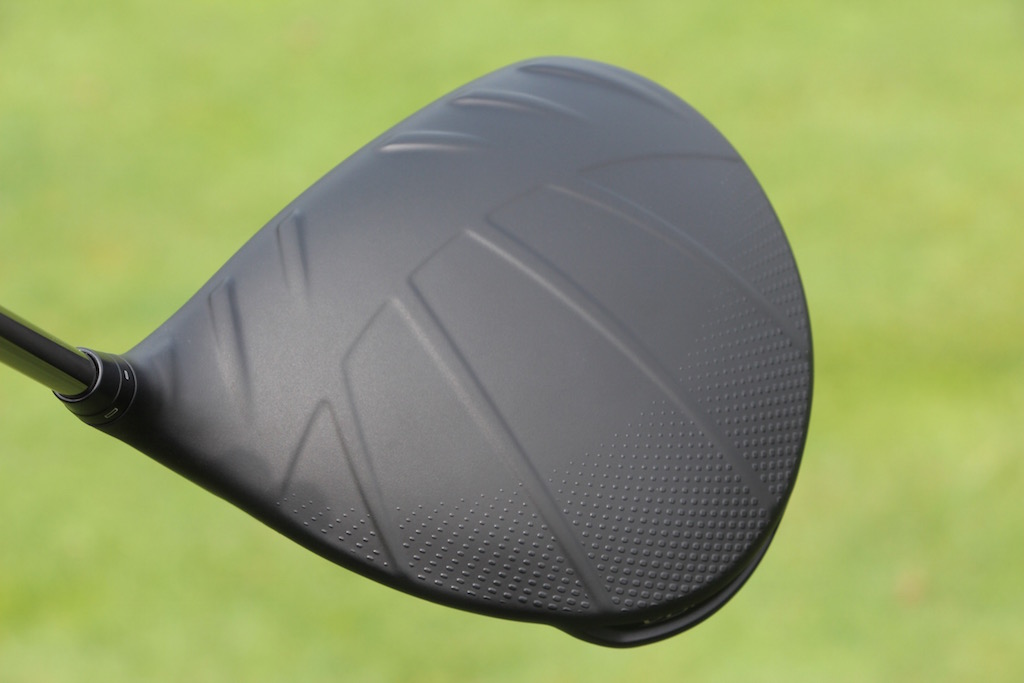
Aerodynamic features on the front of the crowns, “Turbulators,” have been thickened for the G400 release. There’s also Ping’s “DragonFly Technology,” a geometry on the back of the driver crowns that helps push CG lower and more rearward in the driver heads. I personally think the G400 crowns give the drivers an old-school, muscle car-like look, but there’s no question they won’t fly with all golfers.
Whatever your thoughts about what’s on top of the G400 drivers, there’s no question that what’s under the hood can offer something the G and G30 drivers did not. Maybe you’ll like the smaller head. Maybe you’ll prefer the quieter sound. Maybe the improved forgiveness will show up on a launch monitor or on the course. Or maybe you’ll just flat out rip a G400 farther and straighter down the middle like I did.
If that last bit happens, try not to second-guess it.
- LIKE676
- LEGIT83
- WOW48
- LOL18
- IDHT12
- FLOP22
- OB15
- SHANK59
Driver Reviews
Members Choice: The Best Driver of 2017
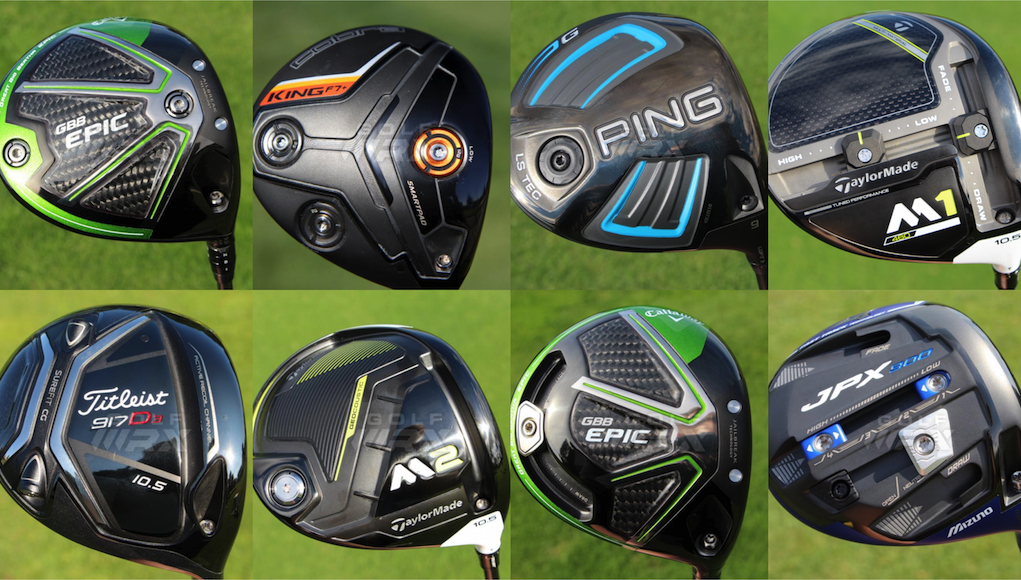
What determines the best driver on the market; is it the opinion of professional club fitters, professional golfers or testing results from a group of amateurs?
At GolfWRX, we believe all three sources can lead golfers to an answer. Being a website founded by passionate golfers with a mission to serve passionate golfers, though, we place a special emphasis on the opinions of our GolfWRX Members — the most knowledgeable group of golfers on the planet. No other group of golfers in the world tests golf clubs as frequently or as extensively as GolfWRX Members. So who better to poll to get an initial indication of the best performing drivers so far in 2017?
So we asked them, “What’s the best driver of 2017?” They voted for the three drivers they felt most worthy of the title and provided feedback about their selections in our special forum thread. You can see the results below (as of the first three weeks of voting), as well as quotes we pulled from GolfWRX Members about the drivers from our forum.
Remember that our polls will remain open for voting throughout the year, and we’re going to keep an eye on the percentages as more and more golfers have an opportunity to test these drivers. We’re also working on another Best Driver list, which will evaluate clubs in another important way. Stay tuned!
Keep in mind that there’s no single driver on the market that is the absolute best option for every golfer: that’s why nearly every manufacturer makes at least two different models. As this list indicates, however, some drivers are working better than others this year. Happy Testing!
Note: Forum posts were minimally edited for grammar, style, spelling and clarity.
Cobra King LTD Black (3.00 percent of votes)
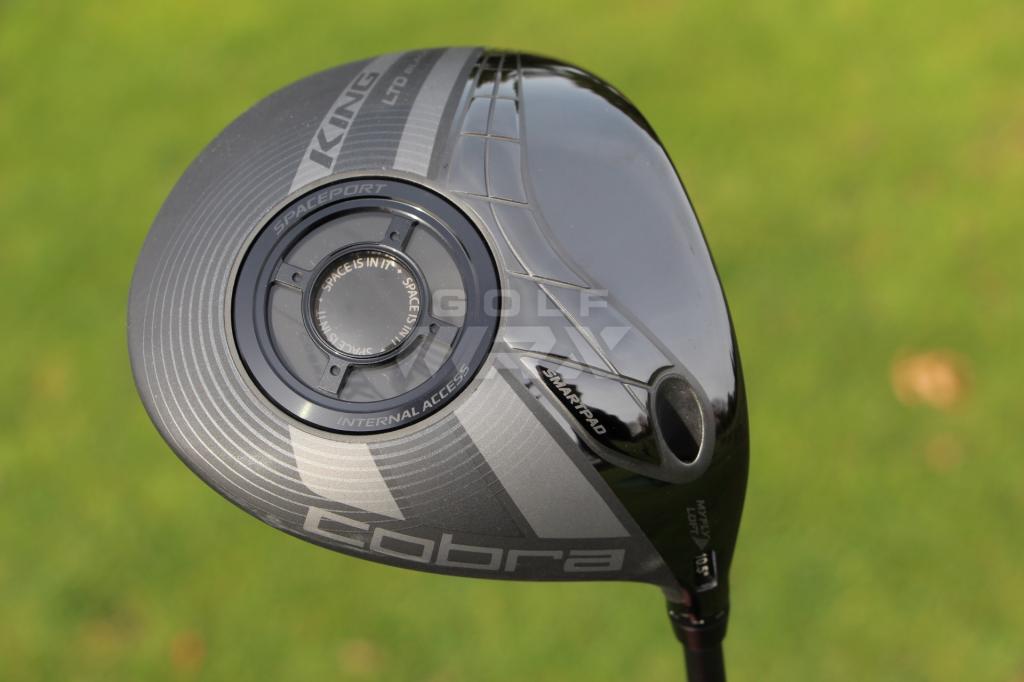
- The General: All-black LTD is really clean looking. I’m about to cover up the orange on my LTD with lead tape. Orange is played out
- mh7vw: Love my LTD, but wish the black finish (or even this gray) didn’t have that subtle checkering you see in some like. Prefer plain black.
- dbleag: I am a fan of the black/orange combo. The performance and sound of the LTD is very appealing to me. I also like that the standard length is 45 inches. For me, that helps it be super-accurate. With the low-spin design, I hit it longest of the current offerings and can’t remember the last time I missed a fairway. Straight, solid, low spin and nice.
Further Reading
Mizuno JPX-900 (3.20 percent)
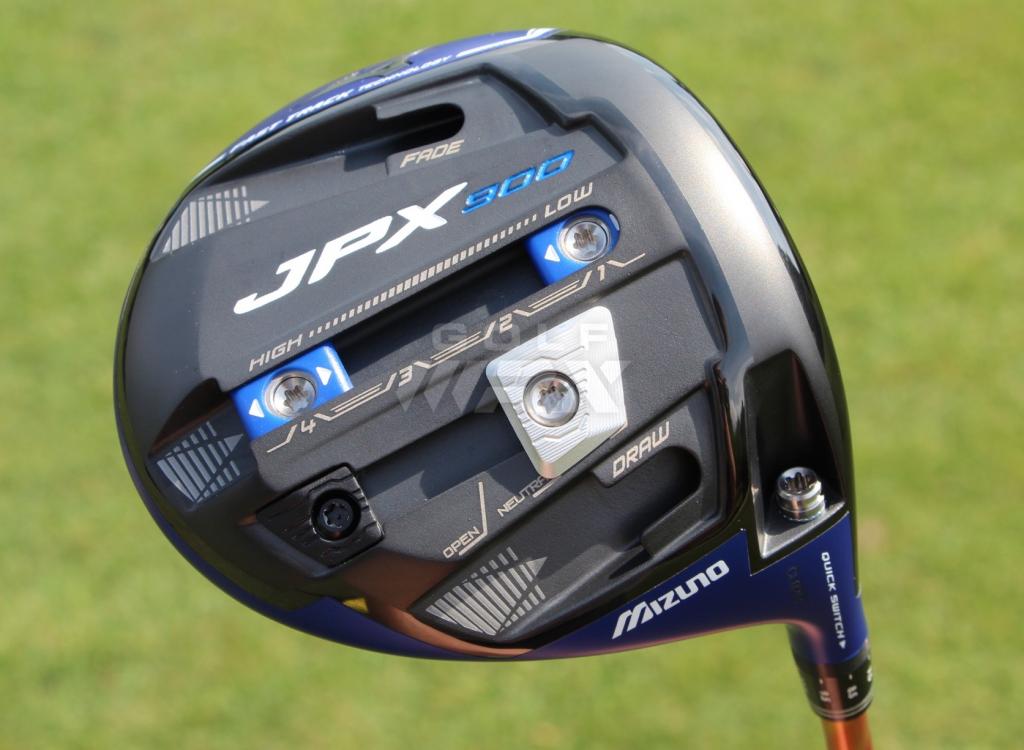
- johnnythunders: JPX goes straight. Best real-deal shaft and is long and very adjustable.
- KT35: That blue head looks awesome sitting on the ground. I hit balls off the toe and heel and didn’t see the big drop off in distance like the previous models.
- nmorton: The JPX-900 is definitely more forgiving compared to the JPX-850, and sounds much better. Though they did sacrifice a bit by going with a little larger profile, but it’s easy to get used to. The graphics are so so, but this driver performs. I’m really digging the Evo II (shaft).
- jay65: I can see that Mizuno is really making a decent effort with its drivers/fairways in terms of tech and aesthetics, and they compliment the new JPX-900 line of irons really well, but if they’re going to make any inroads they really have to address this issue of their custom shafts options. It’s rubbish.
- bok006: The JPX-900, after being properly adjusted by the fitter, gave me an extra 20 yards just like that. My swing speed suggested I was borderline S to X (flex), but the fitter said unless I was fighting a hook I should stick with the S.
- bubbagump: …the JPX-900, when properly fit, is just as long on a consistent basis than all the new models I tried in real life situations. It looks great, sounds solid and just knows the way to keep the ball in play.
- Chazb: I’m 69 years old, have a swing speed of 91 mph and played nine with the JPX-900 this morning. It was in the 40s with a brisk wind hit it around 220 to 230 yards. It was a fairway finder, has great feel and is one of the easiest to control drivers I have ever hit. I can’t wait ’til it is warmer and can dial it in more. So far I have the two weights all the way forward for a lower flight and the other set with a draw bias with 10.5 degrees of loft. This driver is the real deal; it may not be the longest or the shortest, but it is a fairway finder which IMO makes it a winner.
Further Reading
Ping G (3.80 percent)
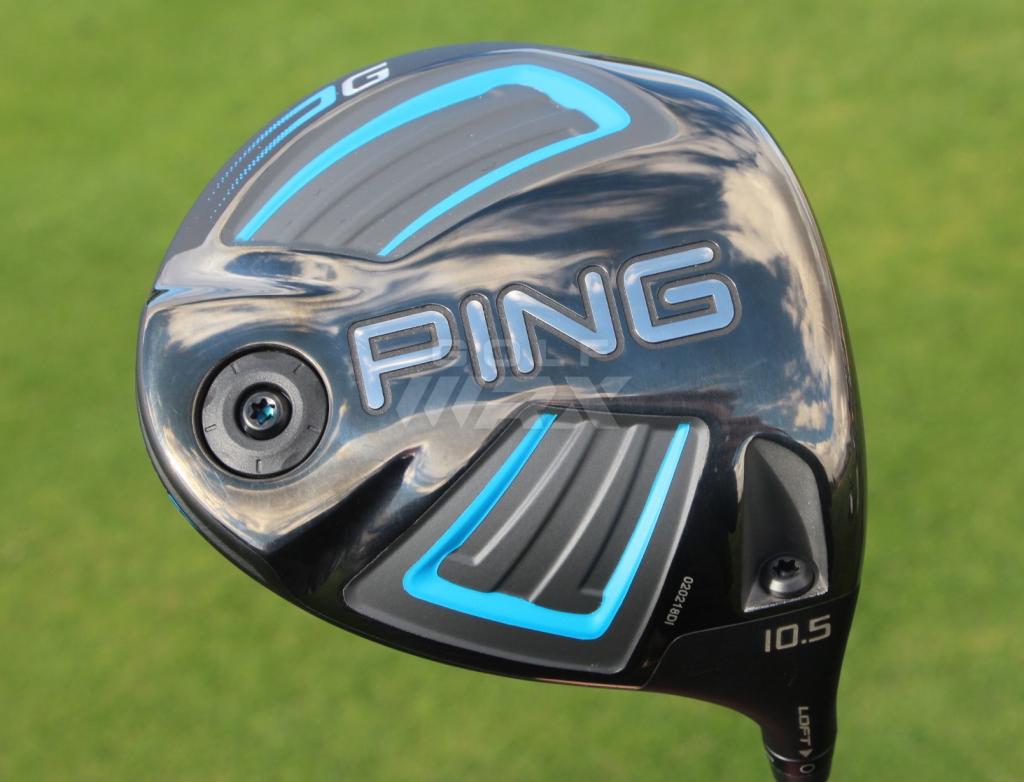
- Wesquire: Ping G is the most forgiving so it wins.
- bopper53: Ping G hands down. Great distance and the most forgiving.
- Dannydubbbs: The Ping G series is just too forgiving. The distance is comparable between most models, but Ping always seems to win out with forgiveness.
- Bruin Bear: The Ping G is going to be overlooked because it’s looked at as “game improvement,” but this driver is a beast. I liked the LS, but it requires a faster swing to get results and in the cold outdoors I just don’t have that all the time. I think the G is the perfect blend of performance and forgiveness.
- cmrl1986: Only reason I switched from the Ping G25 was that the G felt less harsh off the face. Same distance just about.
Further Reading
Cobra King F7+ (3.90 percent)
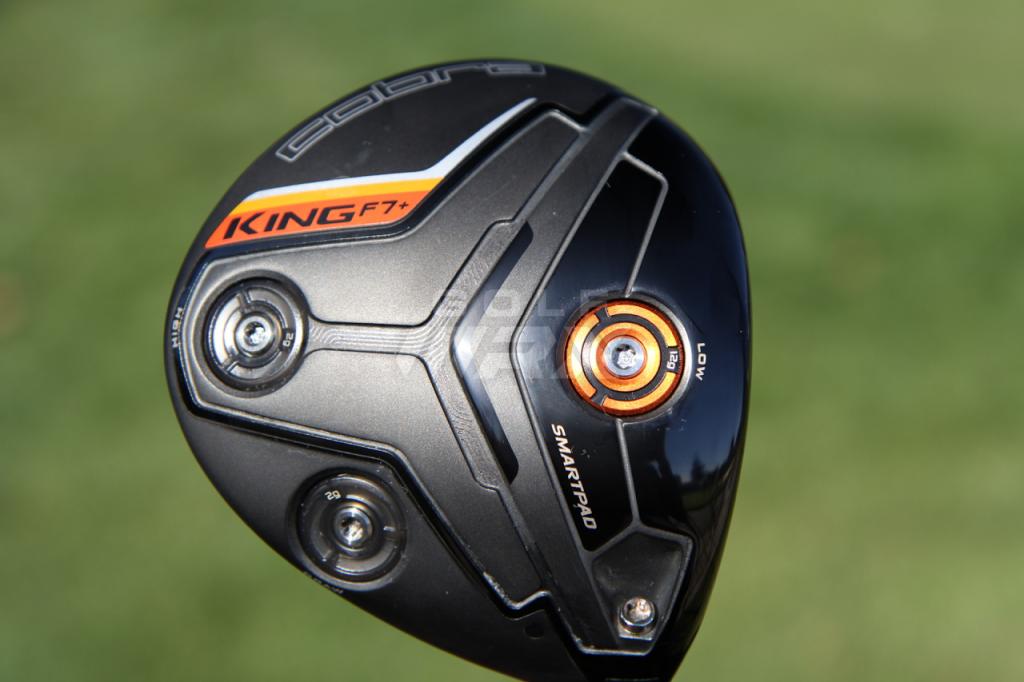
- EntourageLife: Ball really flies off face. Driver head controls spin well. Not one drive “ballooned” and trajectory was high and best of all… very easy to work ball right to left for a confident draw.
- Gollie: The F7+ is another great offering from Cobra… I didn’t get the “MAN, this is gonna take my LTD out of the bag” feeling, but it has very good sound, feel and performance.
- J13: F7+ is a great offering from Cobra and IMO is in the top-3 drivers this year. Epic is the standout for me numbers wise, then M series and F7+ are right behind it. Love the Agera (shaft) in there!!! Such a great shaft; I can’t seem to get mine out of the bag.
- Golfer from MO: Hit both Cobras lefty and as a lefty the LTD is the shizzle. Last year it was the LTD and Big Bertha down to the absolute wire… the F7+ is more workable than the LTD, but not longer and a little worse on mishits.
- Boognish: I took a few swings with the F7+ at Golf Galaxy yesterday. 9.5 degrees with heaviest weight forward. The stock shaft is actually the same model I play in my GBB (albeit in smoked black instead of yellow). Ball flight and distance were similar to my GBB with good consistent sub-3000 backspin. Sound was OK, feel was harder than the GBB.
- thechief16: Just from the range (no LM), I didn’t see a noticeable performance improvement with the F7+ over the original King LTD. And I like the look and sound/feel of the LTD better.
Further Reading
Ping G LS Tec (4.90 percent)
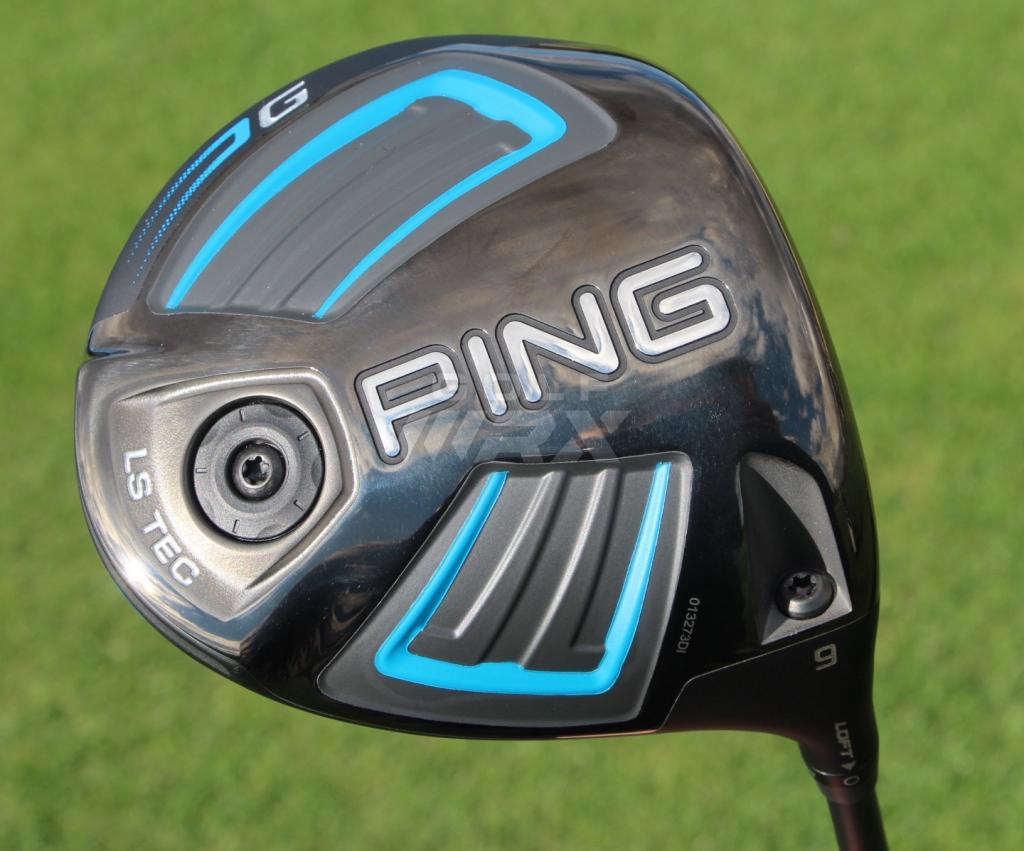
- drvrwdge: I played the G LS with the Ping Tour 65X (shaft) tipped an inch for about a year. Just put the HZRDUS Yellow 75 6.5 tipped an inch and never thought it was possible, but it’s longer and straighter. Best driver shaft combo I’ve ever hit. You can feel that HZRDUS throughout the entire swing. Really gives you a solid connected feel.
- Mtngolfer1: I am not sure that I would consider this a 2017 Driver, but my vote went to the Ping G LS Tec. The fact that my G is still holding its own against the latest 2017 releases has me very excited to see what Ping will release later this year.
- 3woodvt: Fairway finder and plenty long.
- pitchinwedge: I’ve found the LS to be nearly as fade biased as the M family. I get pretty good results with the LS by making a conscious effort to make more of an in-to-out swing. Any lapse in concentration and everything goes right. The M’s require even more effort, which is the reason I stayed with the LS instead.
- 3 Jack Par: After an up and down year with the G LS, I’ve actually recently gone back to my G30 LS head. I only have a couple of rounds as a sample so far, so I can’t really draw a conclusion about whether one or the other is better, but with the same shaft it seems like my G30 head might be a little longer. Honestly, the performance differences are pretty minimal if you really compare the two generations.
Further Reading
Titleist 917D3 (5.30 percent)
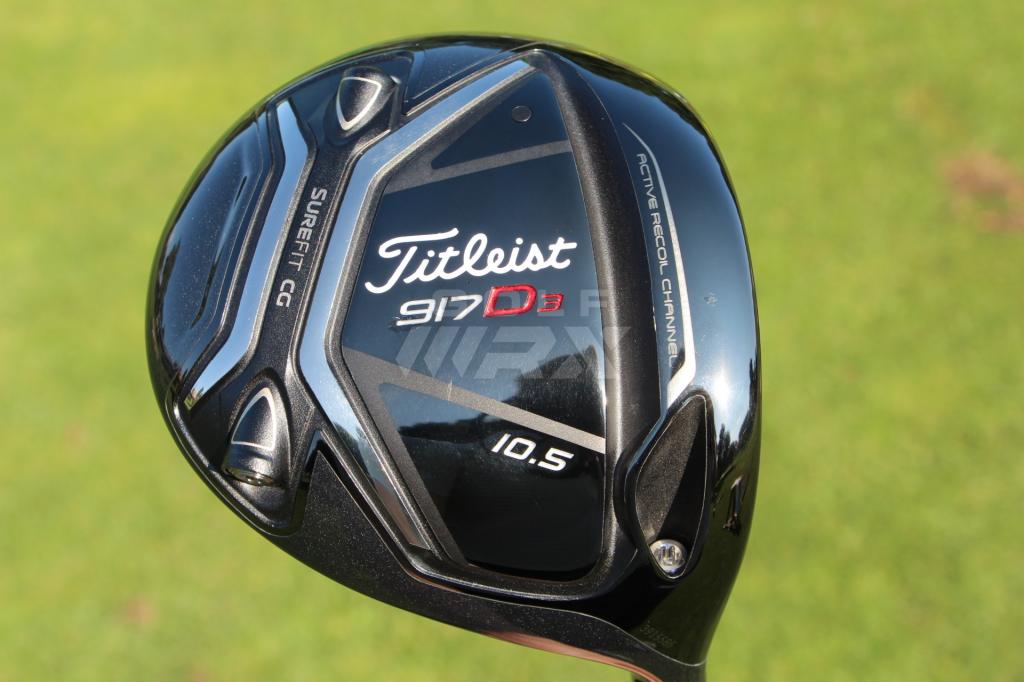
- Gava: The 917D3 is in my bag now, and I’ve found it incredibly long with a recently purchased Graphite Design Tour AD MJ 7TX shaft. Feel and accuracy has been a real improvement as well.
- Togatown22: I find my 917D3 to be just as forgiving as my 915D2 was, and man do I prefer looking down at the head shape and color versus the 915. Very confidence inspiring.
- NIxhex524: I would definitely give the D3 a whirl. I feel like Titleist has made great strides at making the smaller head way more hittable for us ams.
- KPH808: So in conclusion, I was hitting the ball about 9 yards further on average and 3-4 mph faster ball speeds with the 917D3 vs. the 915 D4. The biggest thing for me was the forgiveness between the two; the 917D3 was more forgiving on mishits.
- brushie: The 917D3 head feels soft like the 910 and sounds great. I never had an issue with the 915 sound; it wasn’t great, but it didn’t bother me too much. This is much better, though. The 917D3 head shape is perfect to my eye as well. The area where the 917 shines is forgiveness.
Further Reading
TaylorMade M1 440 (5.35 percent)
- Tigermatt31: The M1 440 is best driver I’ve had ever.
- TollBros: The M1 440 is definitely lower spin than the M1 460 or M2 from last year. Launch angle isn’t really any lower, but spin is lower for sure.
- specimania: This year’s 440 is more forgiving.
- MCoz: Yes, this 440 is more forgiving, and yet it also appears to be more workable than both of the previous M1 and M2s.
- nitram: To save you a bunch of reading and crunching numbers, I quickly concluded there was a little more forgiveness and exactly +0.4 mph ball speed with the 440. By forgiveness I simply mean this: A 1.48 smash 440 will give you the same ball speed and distance as a 1.49/1.50 430. But if you get a 1.50 from both there is no measurable gain. Side-to-side dispersion was better by 4.7 feet with the 440. Workability was a wash between them, although the 430 seems a bit more fade biased whereas I’ll describe the 440 as a scosche more neutral.
- tj24: I hit the M1 440 with my Aldila RIP at an 80-gram X-flex. For me, the spin numbers were around 1700 rpm which is probably to low for my swing. I did, however, like the shape of the head and I felt like I could easily work the ball both ways.
- halfsumo: I really think they nailed it with the shape of this 440 head. Nice pear shape, no weird bulges or ridges that you have to get used to.
Further Reading
- GolfWRX members gain 7 yards on average with 2017 TaylorMade M1, M2 drivers
- 12 Important Changes to the 2017 TaylorMade M1, M2 Drivers
Titleist 917D2 (6.65 percent)
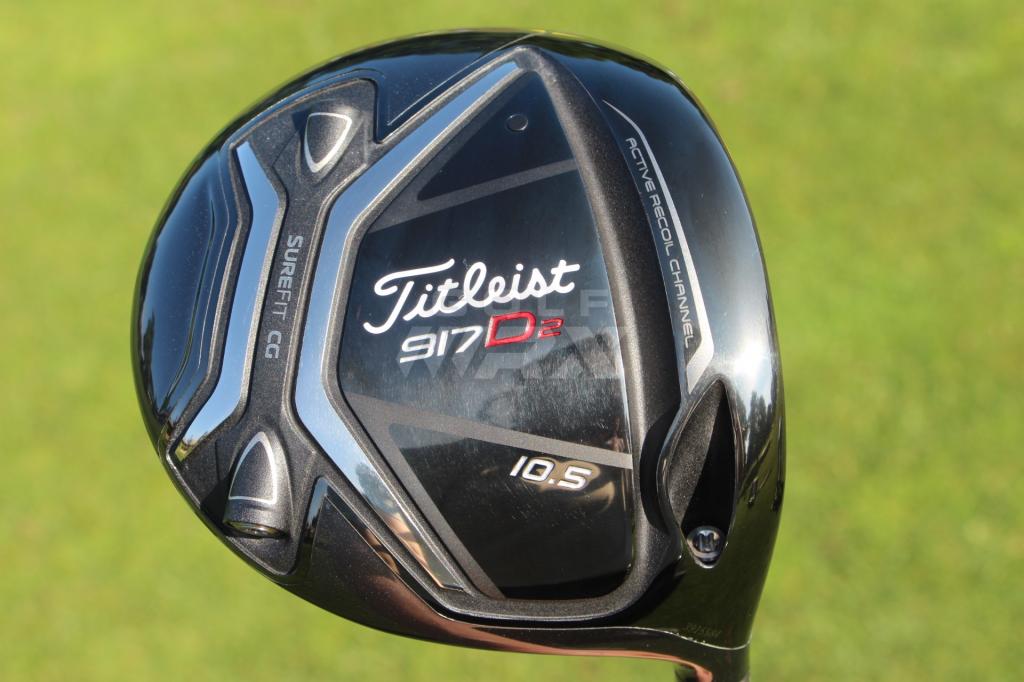
- tsletten: Love the sound of the 917D2.
- bladehunter: No doubt the 917D2 is an accurate, forgiving driver that doesn’t look as big as it is and sounds fantastic.
- JStang: Maybe it’s just me, but I find the face to be more shallow (top to bottom) with the 917D2 than other drivers that I’ve tried lately.
- LuckyLowbrow: I was actually spinning it too low with the D4. Going up to the D2 normalized my spin rate, but led to such an improvement in consistency across the face.
Further Reading
TaylorMade M1 460 2017 (11.81 percent)
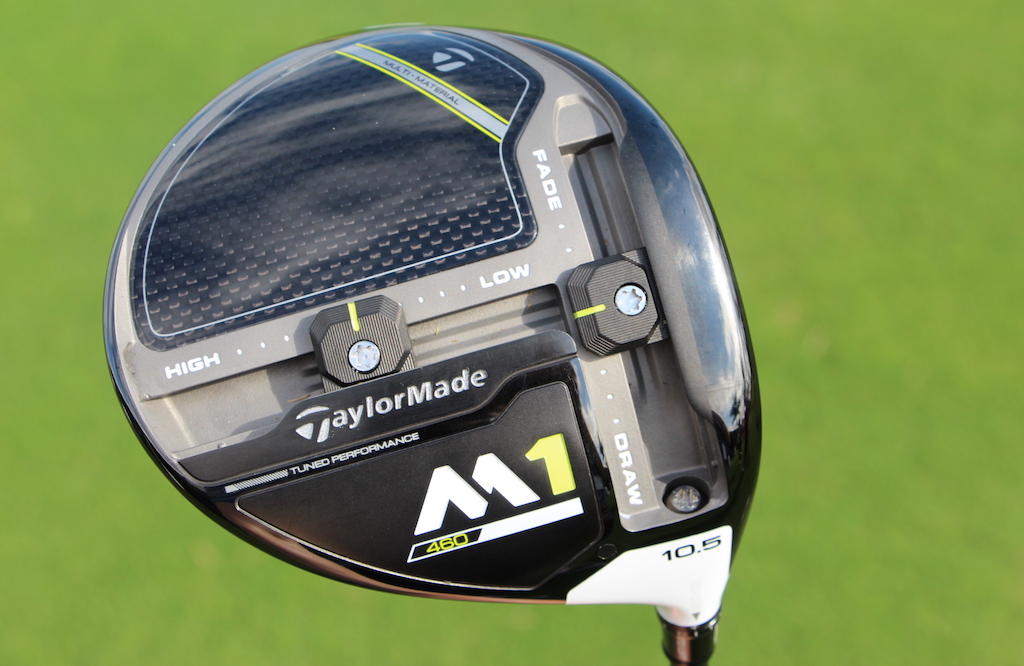
- Ereim: I ended up going with the M1 460. It gave me a slightly tighter dispersion, and I liked looking down at it slightly more.
- jdenham15: The 2017 TaylorMade M1 is a great driver, but I tend to miss wide right and struggled to turn it over.
- ZBigStick: The M1 460 gave me the best results. Was able to increase launch without much added spin with the (T-Track) weight. Feel is good and felt forgiving; dispersion results backing that up.
- BillMurrayGolfing: The face is hot, receptive, thin and makes a nice sound. I like that.
- JStang: Sound and feel were both fantastic. I couldn’t ask for much more in the sound and feel department than what this club offers. Plenty of feedback was provided based on impact as I would expect. I could easily tell where I missed based on feel.
- tnord: Just as another tester found, moving the weight back and forward absolutely does impact how the club sounds. I’m much more a fan of the weight back.
- chickenpotpie: Moving the slider to the draw position made the feel of the driver a little harsher. Feel was much much smoother with that weight in the middle. I didn’t see any such changes with the front/rear slider.
Further Reading
- GolfWRX members gain 7 yards on average with 2017 TaylorMade M1, M2 drivers
- 12 Important Changes to the 2017 TaylorMade M1, M2 Drivers
TaylorMade M2 2017 (11.86 percent)
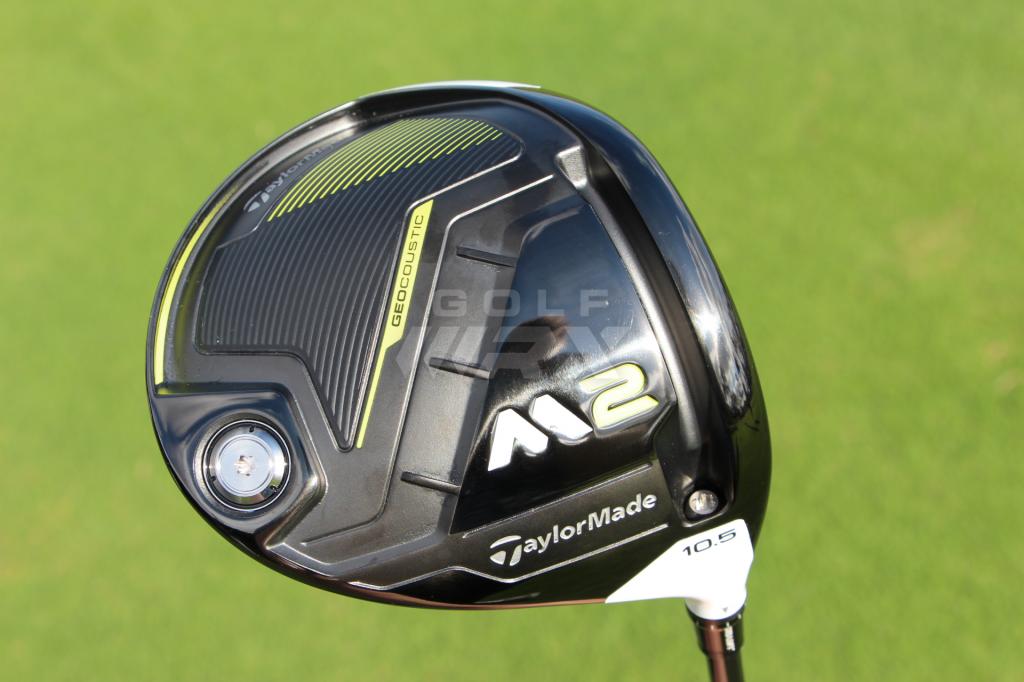
- ZBigStick: I liked the feel of the new M2 but seemed to get better results and numbers with the new M1. Could be the extra 5 grams of head weight?
It was dynamite with the GD TP-6 (shaft)! - erock9174: On Trackman it didn’t put up the most ball speed, but counting all shots the M2 had the longest average distance.
- gripandrip: The M2 seems to have a little bit of a fade bias for me. And the head is HUGE. Maybe it’s a mental thing to be able to turnover a head that large.
- Bomber_11: M2 has very big shoes to fill, as the 2016 M2 was arguably one of the best drivers of the last 3-4 years.
- LONG&STR8: It’s hard to ignore the sound of the new M2. That may be TaylorMade’s biggest fail with that driver, as the sound and feel was one of the best things about the first version that I’ll have in the bag until something better comes along.
- Z1ggy16: The new M2 was terrible for me, not sure why. Unsure if it was the shaft I used but it spun up like a monster and ball speeds weren’t any better than previous M2.
- Peanut191: I don’t really think that the new M2 was much of a step backward, probably more that it doesn’t seem like a big step forward compared to last year’s model. I was hitting my 2016 M2 against a 2017 M2 indoors (which usually amplifies the louder, more obnoxious sound) and I didn’t notice that much of a difference in sound. It could have been that I might have just happened to get a hold of a head that was more muted than normal with the new one, but I just didn’t notice much difference. Performance wise, I could tell that the 2017 was slightly more forgiving than the 2016 model, but I was basically getting the same ball speed and spin numbers, so I didn’t see the need to upgrade.
- gioguy21: Played 54 holes this weekend. The M2 was as reliable as it could get. I hit 11/12 fairways Friday, 10/12 Saturday and 5/9 or so yesterday (windy). Controllable, just wants to go straight. The sound no longer bothers me. I think it’s when hitting indoors or in range bays that it gets unbearably loud. Makes a different sound when hit on the screws I’ve found, similar to last years M2/M1 with less high-pitched ring. The forgiveness is very obvious, as I hit a couple that were close to center of the face but either high or little out toward the toe that flew similar trajectory and distance to how a well struck shot would react. I think where this driver really shines is the ability to either tee it high and hit it with higher trajectory or the ability to hit it lower with a low tee (3/4 of the ball under the crown) and hit laser beams that don’t move left or right.
- G-Bone: From what I’ve seen on Trackman, 2017 M1 was a big jump from 2016; however, 2016 M2 was so good, 2017 is a minor jump.
Further Reading
- GolfWRX members gain 7 yards on average with 2017 TaylorMade M1, M2 drivers
- 12 Important Changes to the 2017 TaylorMade M1, M2 Drivers
Callaway GBB Epic (14.91 percent)
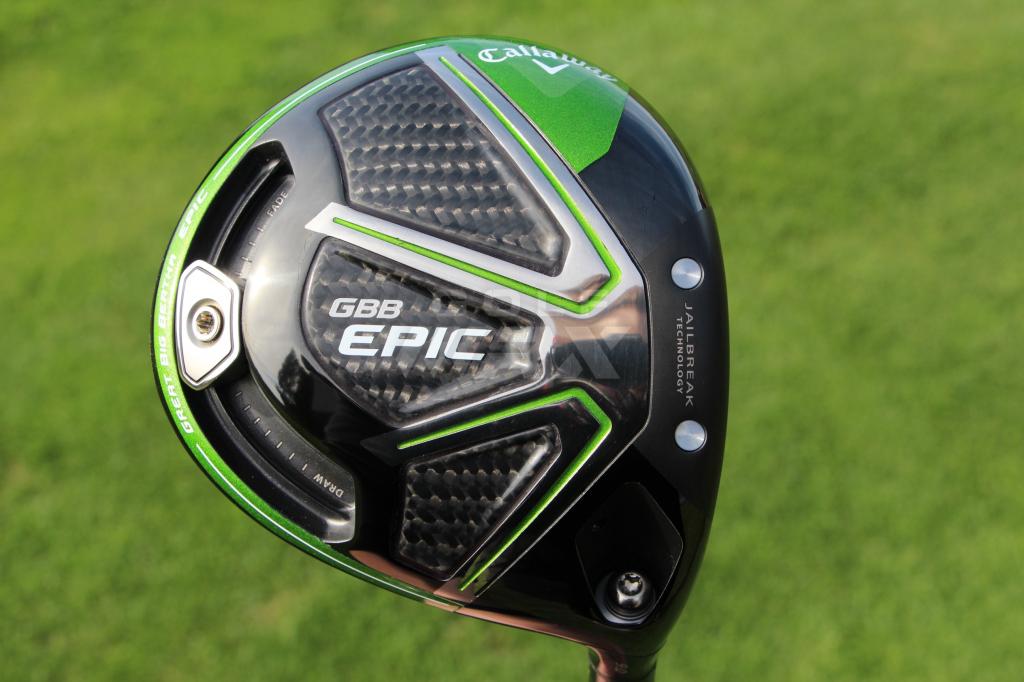
- HDTVMAN: I hit both the Callaway Big Bertha Fusion and Epic with a 44.5-inch UST Recoil F3 shaft and the results were very close. From customer testing, it appears the Epic is longer for those with higher (95+) swing speeds. I have also seen that 44.25-44.5-inch lengths promote tighter dispersion with customers, no loss of distance and better over-all drives.
- mbbrewer: Tried them all and for me Epic was the one. Fastest ball speed, lowest spin and tightest dispersion.
- Ereim: Epic felt great, looked great and the numbers were basically 99.9 percent optimized for my swing.
- johnnylongballz72: There is Epic and there is the M series… then there is everyone else. The votes here show it, the PGA Tour use shows it and launch monitors everywhere show it.
- misplacedtexan83: GBB Epic/Sub Zero pushed the envelop in design and materials to produce increased ball speed and gains. For once a driver did what a company said it would do.
Further Reading
Callaway GBB Epic Sub Zero (16.91 percent)
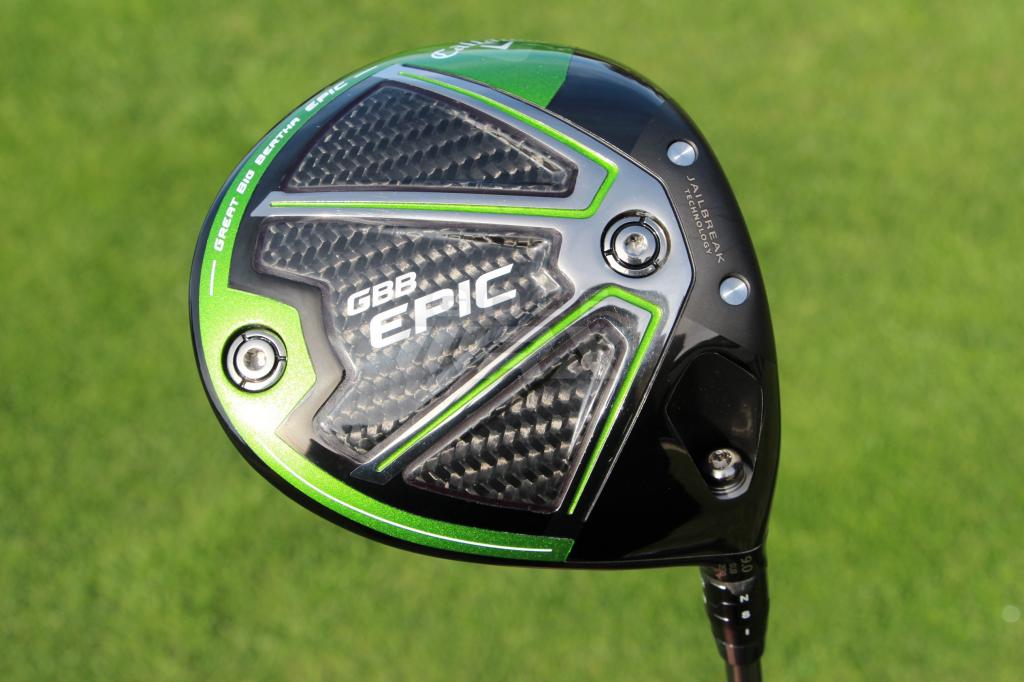
- jdenham15: I tested the Epic Sub Zero and Epic against my 2016 TaylorMade M1 and the ball speed was 5 mph higher on average, which gave me about 10 yards more carry disstance. That was great, but the part that sold me was the forgiveness. I love my Epic Sub Zero. I feel like it’s easier to turn over and I can work it both ways.
- Z1ggy16: Sub Zero was hands down the best, including my gaming M1 (yeah, not even top-3) due to the combination of lower spin, good forgiveness and feel and looks.
- jimhaire: I had a 2016 M2 and went with the Epic Sub Zero. The look at address suited my eye and the feel off the face was better for me. And the club went straight.
- Sef: I have tested a lot of these drivers and for me the Epic Sub Zero was so much better than everything else. I wish I could just apply all three votes to it.
Further Reading
Members Choice 2017
- LIKE652
- LEGIT92
- WOW45
- LOL39
- IDHT16
- FLOP39
- OB34
- SHANK255
-

 19th Hole2 weeks ago
19th Hole2 weeks agoJohn Daly stuns fans into silence with brutal opening tee shot on PGA Tour Champions
-

 19th Hole4 days ago
19th Hole4 days agoThings got heated at the Houston Open between Tony Finau and Alejandro Tosti. Here’s why
-

 19th Hole1 day ago
19th Hole1 day agoReport: Tiger Woods has ‘eliminated sex’ in preparation for the 2024 Masters
-

 19th Hole2 weeks ago
19th Hole2 weeks ago2-time major champ announces shock retirement from the sport at age of 33
-

 19th Hole2 weeks ago
19th Hole2 weeks agoEdoardo Molinari reveals the latest PGA Tour golfer to turn down ‘good offer’ from LIV Golf
-

 19th Hole2 weeks ago
19th Hole2 weeks agoCharlie Woods finds it tough going on American Junior Golf Association debut
-

 19th Hole3 weeks ago
19th Hole3 weeks agoScottie Scheffler had an interesting response when asked how he ‘quiets the noise’ following Players victory
-

 19th Hole2 weeks ago
19th Hole2 weeks agoJon Rahm dealt fresh blow to hopes of qualifying for 2025 Ryder Cup

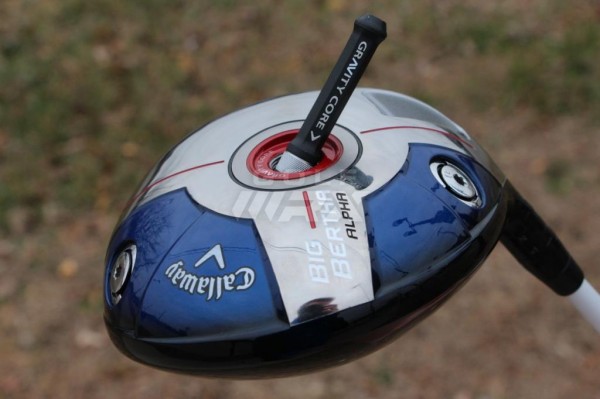
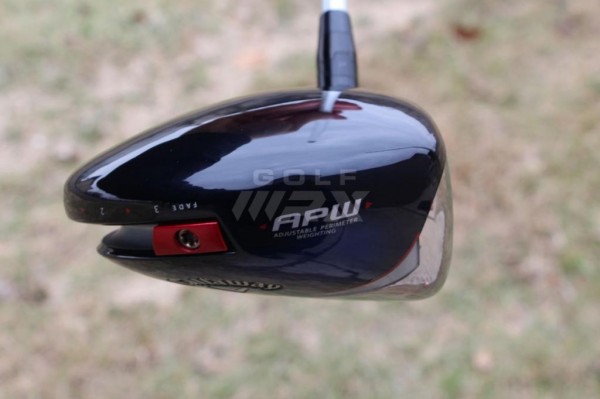
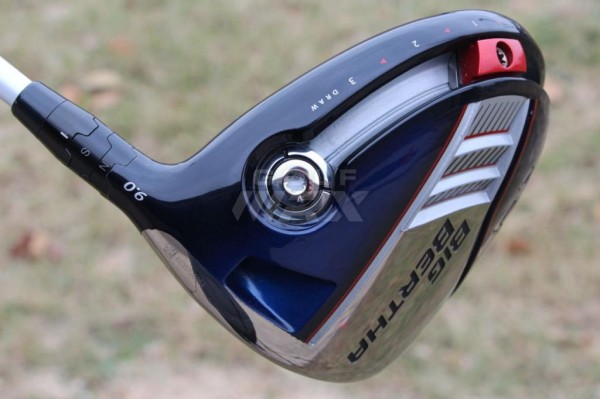
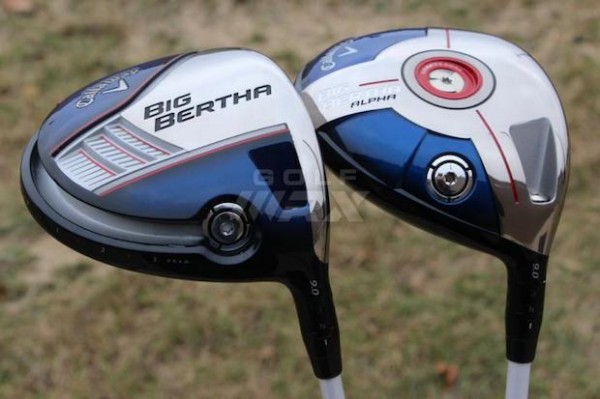
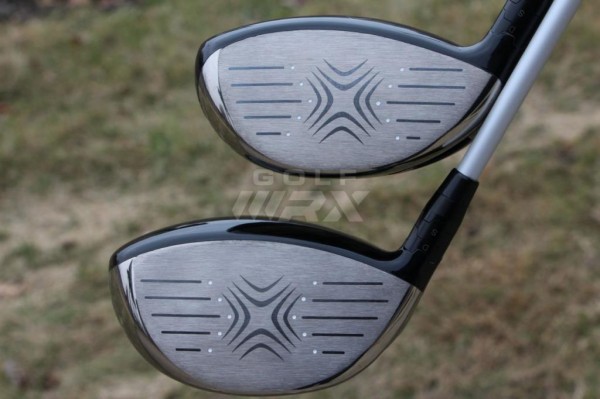
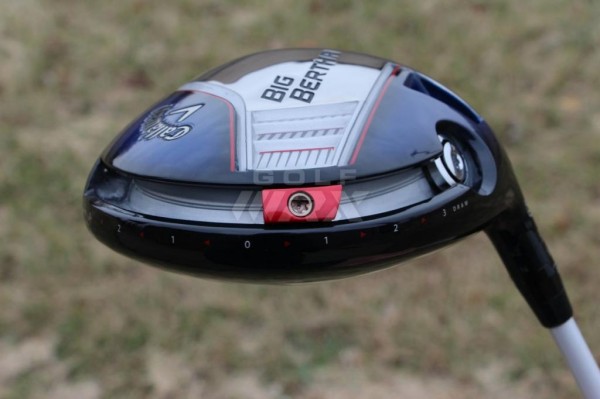
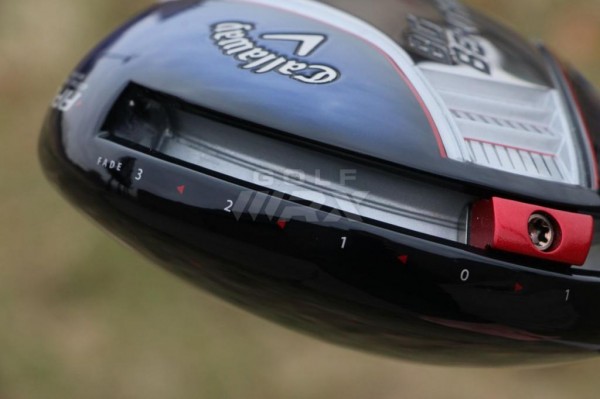
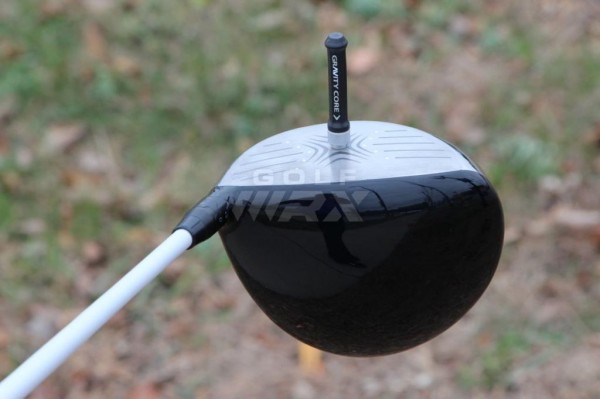
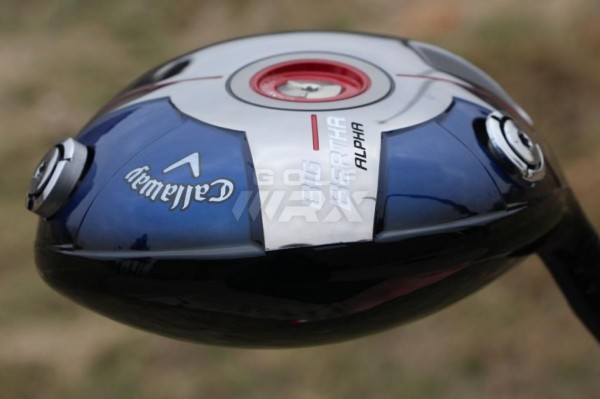
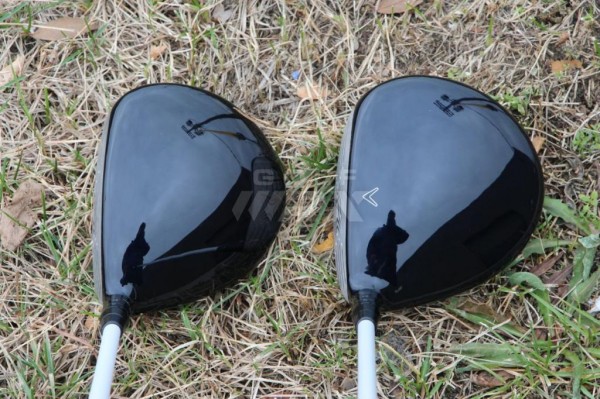

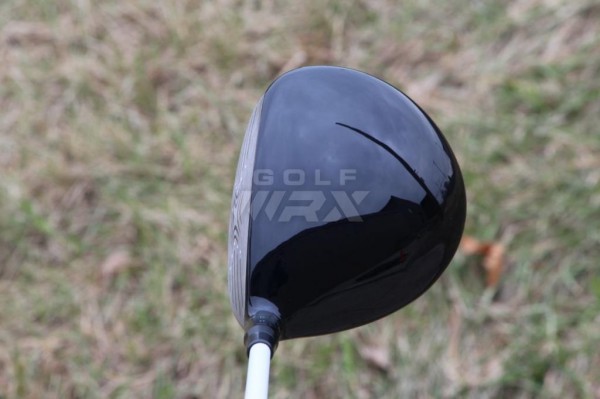
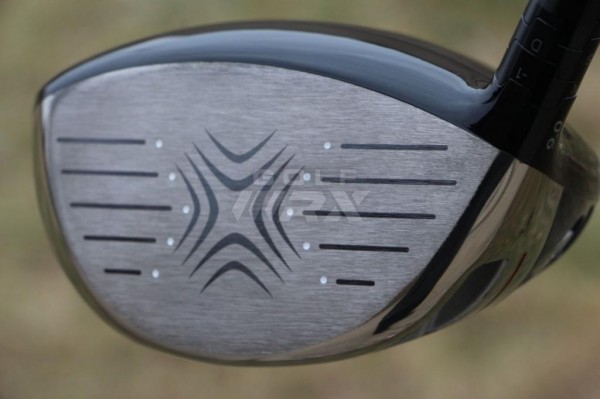
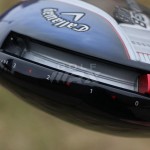
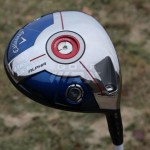
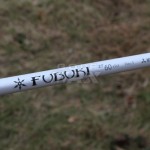
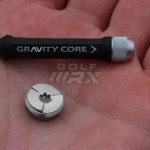
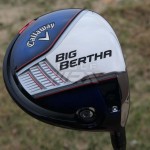
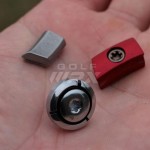
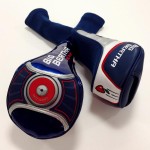
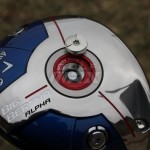
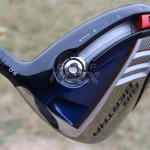
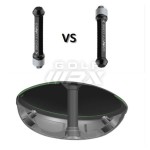
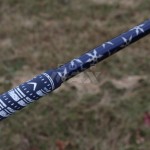
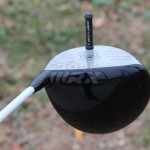
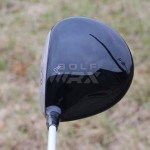
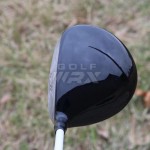
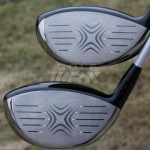

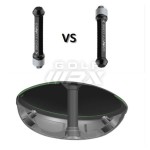
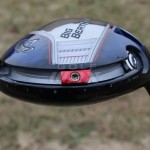
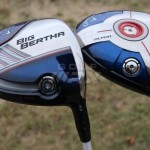
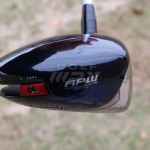
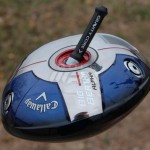


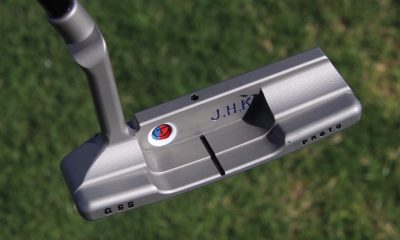



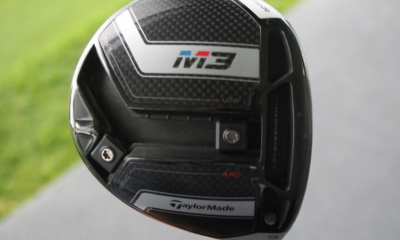

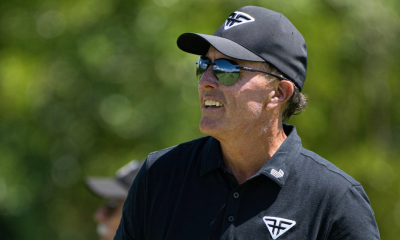



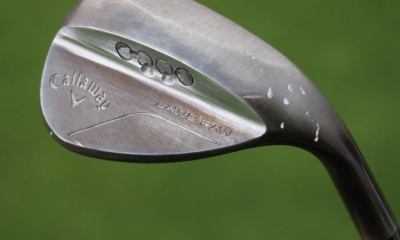

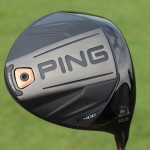
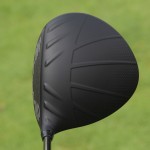
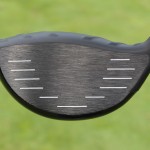
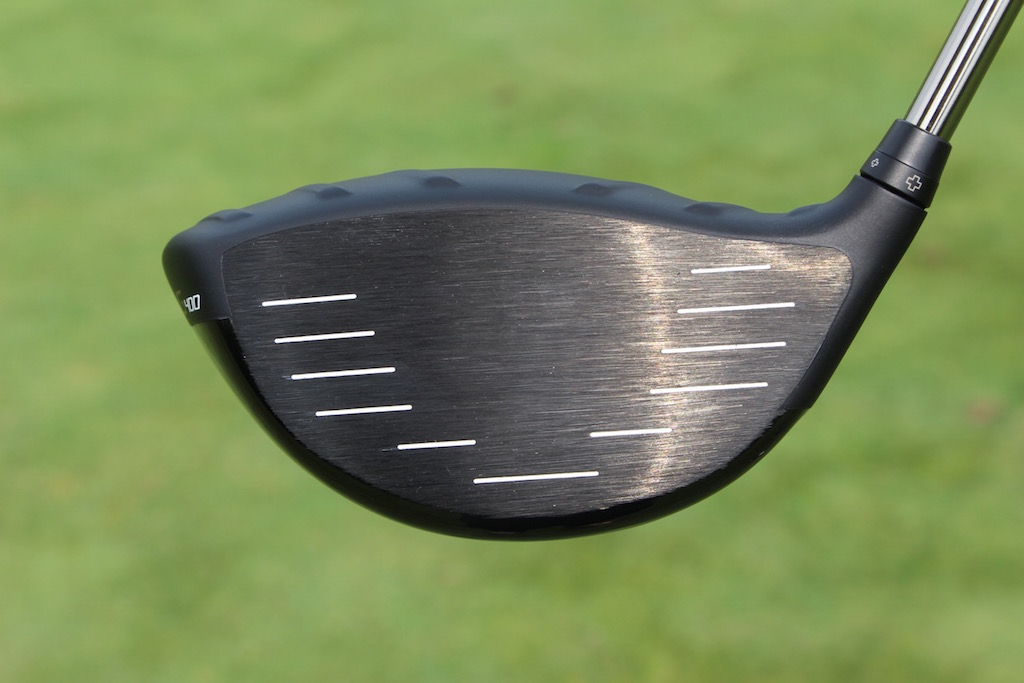
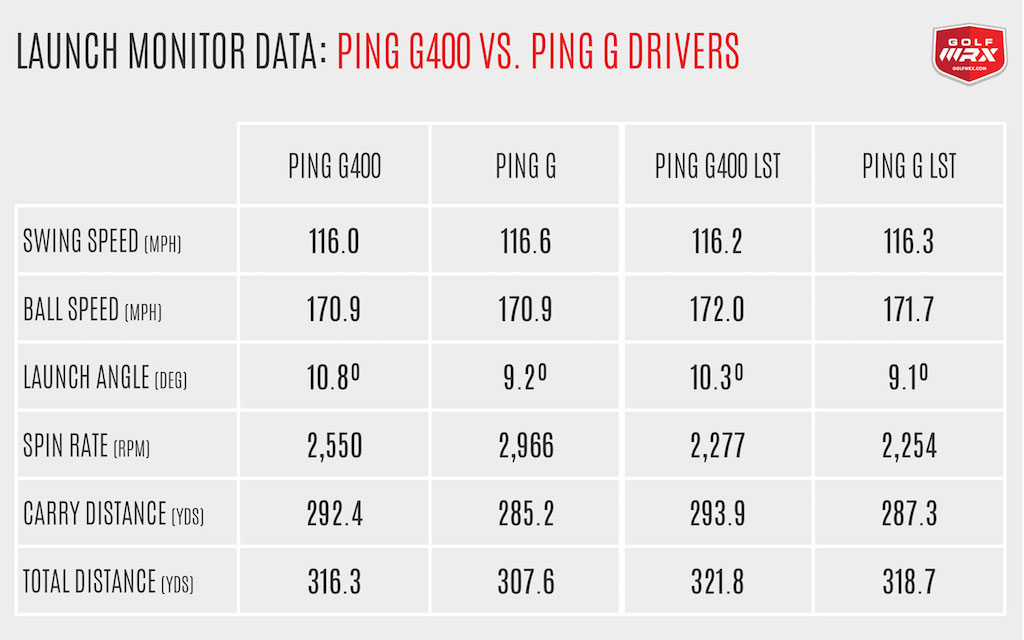
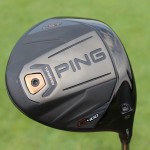
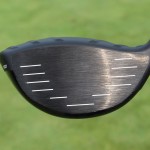
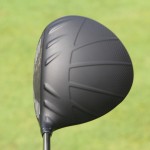
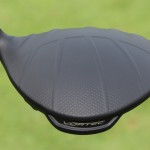
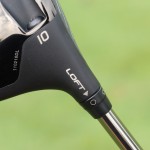
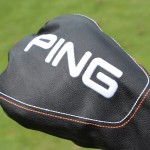
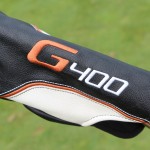
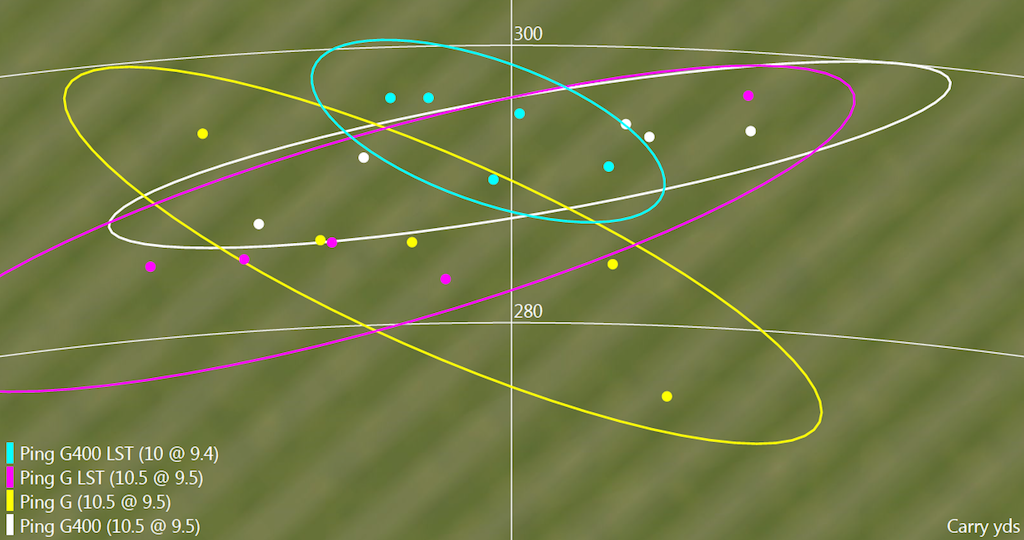
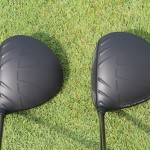
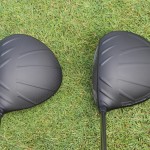
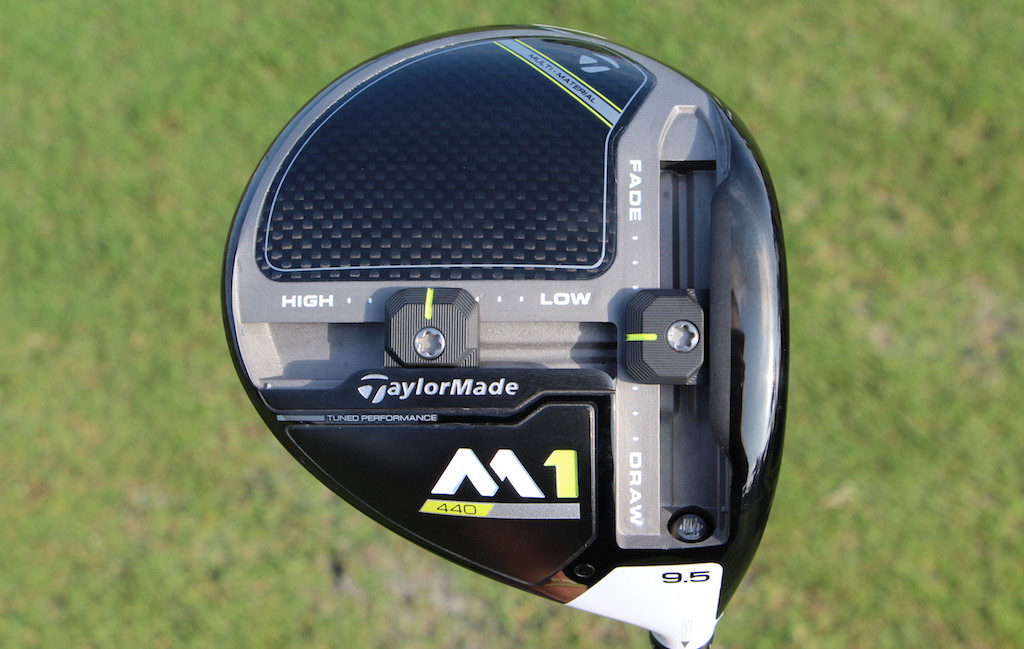














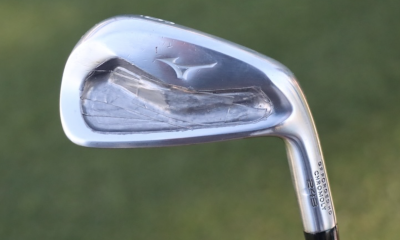

mike knapik
Dec 7, 2014 at 1:36 pm
I bought the alpha driver new but one year after first coming out. boy, am I glad I didn’t pay $400. for it,very disappointed. in my opinion the gravity core aspect was nothing but a gimic to sell clubs. I believe the other big bertha would have been a better choice.HEY CALLAWAY WANNA TRADE?? iv’e bought callaway for years and now you want to deceive me.i remember when cobra first came out with the FIRST 9 point face–that was the last cobra I ever bought.
tom busch
Aug 20, 2014 at 5:33 pm
I would like to see a comprehensive comparison of current drivers conducted by/on an “Iron Byron” type device. Performance data would be empirical. Personal feedback would essentially be limited to features such as feel, appearance/setup alignment, contact sound, etc. A mechanical type of test would be meaningful to golfers of every age and swing speed and would be far more instructive than a test conducted by an individual, regardless of skill level. It’s likely such a test would be beneficial to the industry, as well, because performance “dispersion” would promote confidence and accuracy in making a purchasing choice. BTW, if such a single test already exists, please let me know where I can see it.
Ken
Aug 14, 2014 at 11:00 am
Hi,
I have a Alpha 10.5* driver with stock Fubuki ZT 60 Regular shaft and 1gm and 7gm weights that was ordered by the dealer with stock ZT shaft and build and some of my mates swung the club and said it’s really heavy.
I’m a club maker so decided to weigh the Alpha head compared to Big Bertha.
Alpha – 197gm, SW D6
BB – 192gm , SW D3
Can others weight the Alpha head to see if they vary, I believe Callaway tolerances would be +/- 2gm, meaning could vary from 190 to 194gms, or D2 to D4?
Thanking you in anticipation.
Cheerz ;^)
David
Aug 2, 2014 at 9:47 pm
I have just received my driver last week with standard stiff shaft. I raced out of work at 1pm on Friday after receiving an email from Fed Ex saying it had arrived (7 days to Australia is bloody amazing)
Normally I would take a new toy to the range but I felt like playing nine holes so into the bag it went and to the first tee. I played two balls with everything set the neutral 10.5 loft but sliding weight set to near the heal (2 on the dial)
Now I’m traditionally a straight hitter with a hint of fade, first two went straight with a hint of draw …hmm luvin this.
Then to the second tee I quickly adjusted it to a fade setting and yup a nice fade was happening …down 1 degrees in loft and fade on the weight on the back.
Flight was same though and the fade didn’t baloon, this is defenitely a low spin bomber, I swing at 100 -104 when warmed up and was getting 230 meter carry (250 yards) easily.
The feel off the face is beautiful and hardness or no feedback at all. Unlike my nike covert which felt hard.
I found this driver really easy to draw and could hit the low hook if I needed to as I play on a links course. The shaft I don’t mind and does t feel too whippy like many stock shafts and ball flight told me it’s fine.
The thing I found most pleasing is that every time I adjusted something it actually had an effect on ball flight – which when I trailed the 913 d from titleist was t the same, no matter what adjustment I made on the titleist it came out pretty much the same.
The face is hot on the driver. I’m an 8 handicap with no real desire to get lower to be honest, just enjoy the game. If your looking for a driver that goes straight this is for you. If your a low marker who draws the ball I would consider the alpha model as I reckon the big bertha standard could turn into a hooking machine for you low cap guys.
I have since had a range session with yesterday and it’s dialled in nicely at 10.5 loft standard and weight set to 3 for perfect straight shot and I can draw or fade it of I need to by the swing and aim point as opposed to the club which I want.
Look it’s no longer than any other driver – let’s ignore the hype from manafacturers like taylormade and cobra – hey I have an idea from driver media campaign “Damn Straight and damn forgiving” ….so you find the short grass not the trees or thick rough
With today’s closely mown fairways most people aren’t struggling with distance – they want accuracy.
J.T. Parker
Jun 9, 2014 at 3:10 pm
It sounds to me like we can’t trust what we purchase off the rack because no two drivers are made exactly the same. I also agree with what someone said that “we adjust to the driver instead of vice versa so when we try a new one seldom is is better than our old one until we have played with it a while and made that adjustment.
J.T. Parker
Jun 9, 2014 at 2:39 pm
I am using a Callaway Diablo Octane for about four years. I tried the new Big Bertha and the Alpha but they do not feel like they have any meat in them. They are so light that I feel like I can swing them as hard as I want, but in the end, the Octane feels more solid and goes on average 7 to 8 yards further than the Bertha and the Alpha. It seems to me any tme I try an ajustable club, I do not like the way they feel (the feedback is terrible). Is it the shaft or the club head that feels so bad. I have the project x stiff in the octane.
Garrett Kondo
Jun 8, 2014 at 3:14 am
Wondering if the BB is a high or low flight club. I usually use a 9.5. I am in Hawaii and it does get windy here so I usually avoid the 10.5. Is the club normal flighted club. I know the slider is a low flighted club.
Paul McCarthy
May 28, 2014 at 8:58 am
Any thoughts on the stock fubuki z 50 shafts? picked up the big bertha with the 50 z stiff in an effort to increase club head speed. I have gained some distance but the shaft feels very weak and inconsistent. Any recommendations for a stiffer/heavier shaft to possibly lower and straighten flight?
DJ
Jun 18, 2014 at 11:23 pm
I tried the BB with the stock shaft and it is way too light. I also tried it with the Diamana 72 white board, feels great. The Diamana shaft is a low spinning shaft. It is best to get fit…finding the right shaft is key.
Hunter Jay Poole
Apr 22, 2014 at 3:53 pm
I just bought the big Bertha, It is amazing. I can get the ball 30 to 50 yards more, But I don’t know how to control where the ball goes, but that just a personal problem for me. I was using a HT 12.5 degree taylormade burner, The farthest I’ve hit that driver was about 190-200 yards. With the big Bertha I am able to hit the ball with a good swing and get it about 230-250 trust me I am in love with this club. And even if Don’t hit the sweet spot of the club it still sends the ball 200 yards out it is vary forgiving. When you do hit the sweet spot it feels like butter.
Jim
Apr 7, 2014 at 9:08 pm
My dad just got his bertha and from the looks of things on the range it does as advertised as far as the adjustibility changed the shot. He has 13.5 senior flex appears to definetly be hitting maybe 7-10 yards farther in air. Hard to judge rollout due to soaked range and wind in face . Worth a look he says it is easier to swing than razr x black he had due to lighter swing weight.
Jim
Apr 14, 2014 at 10:44 pm
Just to follow up after on course play it is about 7 yards more carry 10-15 longer total he went from 215 average to 225 and got one out to 243 by confirmation of gps but was down wind he is very pleased next time we will max out the loft and see what happens thanks
Greg
Apr 6, 2014 at 1:14 pm
I got my Alpha (9 degree, x stiff) two weeks ago and took it with me to Tucson for a spring break golf vacation – i hit tons of fairways and it feels solid, however i was leaving pitch marks out there like i was hitting a 5 iron. I was curious, so i took my magnetic protractor to it to measure its loft – something not right here: in its neutral setting, my “9 degree” was more like 12 or 13….and holding the club up next to others in my stable, sure enough, the thing looks like a strong three wood. In nobody’s universe is this club anywhere close to 9 degrees in loft. I’m somewhat chafed – i test, deliberate and finally pull the trigger and order a $500 driver, and the thing is really a huge headed spoon. I’m going to take this up with Callaway and see how they respond. Surely they’ve got some true 9 degree heads laying around, and I want them to swap mine out. Disappointed.
JP
Feb 24, 2014 at 11:07 pm
I hit the alpha and TM sldr today on a track man, the sldr had less spin and went 12-15 yards consistently farther. Plus $100 buck less, no brainier.
DHP
Feb 25, 2014 at 9:23 pm
JP I just got home from a fitting hitting a TrackMan and my results were vastly different. With 30 hits on each club, my spin rate averaged 223 lower and 7 yds longer with the alpha. I went there to test the SLDR since I’m a TM guy and my R11 put up similar #’s. I passed on it. They asked me to try the new Callaway and from the first swing at impact I new it was awesome and felt better and amazingly hot off the face. It was also easier to shape the shots. Hopefully both our TrackMan’s worked properly and each found the right club.
HV
Mar 8, 2014 at 10:40 am
I agree. The Alpha is in another world compared to sldr. The sldr has a terrible feel and really does not live up to the hype. The Alpha on the other hand is an extraordinary driver. A shockingly pleasing feel and the ball just rockets off the face in a penetrating flight. Truly a great product.
Lorenz
Feb 22, 2014 at 6:52 am
Hey guys, I heard that the 5g weight on the Big Bertha is not interchangeable. Is that true? If not can I use the old weight screws from the razr fit driver to make the driver heavier and increase the swingweight a bit. It probably would lead to a club with more draw, without touching the sliding weight. Thanks guys!!
sarge
Mar 27, 2014 at 9:01 am
The 5 gram weight on the back of the BB head is definitely a stationary weight.I suspect that it’s there to counter the perimeter sliding weight because the head is so light.I’m trying to find out for certain, but I can’t get any information on it.
RobN
Mar 6, 2015 at 11:20 am
The 5g weight is DEFINITELY interchangeable. I shortened my BB 1″, so I swapped out the 5g weight with an 11g weight from Bily Bob’s Golf to keep the swing weight the same. With that, I moved the sliding weight closer to neutral and the ball flight hasn’t changed.
Jgpl001
Feb 18, 2014 at 5:27 pm
When these first appeared on this site I slated them, said they were a gimmick and destined to be a failure. Having seen and hit them in the flesh I must apologise to Callaway – they are FANTASTIC
I have a Titleist 913 with a Speeder VC 6.2 shaft,but the Alpha with the stock Fubuki blew it away. It was longer (not by much), but it was so much smoother and much more forgiving.
I have played Titleist drivers and irons for the past 10 years, but a new BB Alpha is on the way and I am now looking at the Apex Pro irons……..
Callaway have really got their act together for 2014
Keith
Feb 18, 2014 at 4:54 pm
Oh I would love to pick up the Alpha, but at $499 I would never be able to justify that purchase. Heck even $399 is out of my price range, maybe in 6 months to a year I might be able to get one under $200.
John
May 8, 2014 at 2:05 pm
I was amazed and delighted to learn that Calloway will not discount Big Bertha drivers. This insures that loyal Calloway Big Bertha customers will not get screwed 6 months after product launch by retail price drops. The price will remain the same until model inventory is exhausted. Shame on Nike, Taylor Made and others that use this tactic. This was a major factor in my decision to purchase a Big Bertha Alpha.
P Greco
Jul 7, 2014 at 5:08 pm
It is now 399
Pete
Nov 1, 2014 at 5:38 pm
Just bought mine for $200.
John
Feb 22, 2016 at 10:57 pm
$75 on eBay.
Scott D
May 14, 2022 at 12:12 pm
Just got a like new one at Golf Galaxy for $50. It has kicked my SLDR that I had used pretty loyally for quite a while out of the bag. Maybe the BB Alpha is slightly longer than SLDR, but more importantly it is definitely more forgiving and consistent than SLDR.
leftright
Sep 18, 2014 at 4:58 pm
That stock shaft in the Alpha is the real deal. It will retail over 300 when Mitsubishi releases them to the public. I wanted the BB but the club was light, tried the Alpha worrying about spin but I bought the 10.5 with ZT (s) and I have hit some drives where no man has gone before (me of course ~275) not bad for some 57 y/o with back pain. It’s easily 10 yards past my Stage 2 tour, stock shaft but I still like my TM driver and will hold on to it just in case because it’s straight. I think at 399 and a gift card the Alpha is worth a look for anyone who can generate 95+ and may want to gain a little distance and accuracy. The shaft is rock solid.
Dave
Oct 26, 2014 at 5:34 pm
It’s now $299 at Golfsmith! Pretty quick drop. Same price for the BB and BB alpha.
Wonder if the Beta and Beta Double Black is all that much of a step up from the BB and BB Alpha.
Tony Lynam
Feb 15, 2014 at 7:58 pm
Alpha I saw today at Dicks was $499.00. And golf’s brain trust continues to wonder why the game is not growing.
Brandon
Aug 31, 2014 at 4:59 pm
nail on the head
Shortgame85
Feb 15, 2014 at 10:13 am
Thank you for the excellent review, Kane. As an observation and somewhat as an addendum to Loz’s post above, I would affirm his desire to see a review and results by one who has a slower swing speed. Many of us who play are, unfortunately, north of fifty. As the dew from our collective lilies dries a bit, our swing speed suffers a downward turn. While we recall with great pride our long drives of yore (and for some of us, our medium drives of days past), I am afraid time and circumstances may have robbed us of our ability to swing the big stick with as much authority as we once had. Nonetheless, the desire remains. Each year, we yearn for a another yard or two from the latest crop of technological marvels from the likes of Callaway, TaylorMade, etc. And, while I realize that reviews such as yours are but starting points, they are helpful, if only to whet our appetites. Please pass on to the wizards of GolfWRX, a superb forum run brilliantly, that there are many of us, well… shall I say delicately, more mature golfers who would be grateful for reviews of any clubs but, especially drivers, by ones with slower swing speeds. Again, great review. Here’s hoping for warmer weather for us all!
Joe Young
Feb 14, 2014 at 9:49 am
Isn’t the stock swing weight for Big Bertha D2, same as Optiforce?
http://www.callawaygolf.com/golf-clubs/drivers/drivers-2014-big-bertha.html
Golf Golf
Feb 18, 2014 at 8:53 am
Specs, specs, specs, specs. Spec-specs!!!
Loz
Feb 14, 2014 at 2:57 am
Though I don’t particularly rate, or would be led by the results of, the review system being used on another golf forum, I am slightly concerned as to how this forum bases it’s review, of what is one of the biggest club releases of the year, on the opinion of one person.
I think in this instance a more detailed comparison against the key competitors, such as the SLDR, Covert 2.0, Ping etc might have been justified.
I think more importantly I’d like to see this type of club (the Alpha in particular) being tested by a broader range of handicaps, and would be interested to know if those who went to the fitting have really found it to be a game changer, or have they reverted back to their old club, or since switched to something else.
Anyway thanks to Kane for the review and the Alpha (and standard BB) will definitely be one I’ll try when it comes to the UK.
Following on from an earlier comment I recently had a Mizuno iron fitting at their national fitting centre and went with the recommended KBS tour X flex (93 mph 6 iron). I typically swing the driver at about 105 mph which I don’t think is particularly fast, but would like to know if in the ZT this is a definite S or possible X flex.
Thanks
David Nantel
Feb 14, 2014 at 11:49 am
at 105, it is really hard to determine IMO, i thing it depend a lot on the spin you usually generate from your swing. I know that some fitter would use X-flex shaft to bring down the spin a little bit.
Personnaly, i would also add based on my experience of shaft manufacturer that i would probably use a X-stiff with mitsubishi rayon and stay with stiff for Aldila.
Loz
Feb 14, 2014 at 2:02 pm
Thanks for your feedback David. I currently have a 9.5 i20 with the stock stiff shaft and have never really got on with it. It often goes high and right, which I know is a swing fault, but it’s not a shape I’m used to. It doesn’t happen with other clubs. Best club I’ve used in recent years was a 905R with a stiff 76g Pro Force V2. Could you recommend a similar shaft in the current offerings? Thanks
Morgan
Feb 16, 2014 at 8:24 pm
TheGolfSpy did a great shootout for high and low swing speeds and against tons of other clubs the BBA included. I tried the BB-A and was disappointed.Put a tip on my shaft and of I ran to try it out. Not for me I found out, just didn’t do as well as my current driver. I wasn’t disappointed as others don’t suite me either but you don’t know till you try right! Callaway did a great PR job though I was really keen to try it.
markb
Feb 14, 2014 at 11:53 am
Thanks for your review of the KBS Tour X flex, but isn’t that just the review of one person? Shouldn’t we have a test by “a broader range of handicaps”?
Loz
Feb 14, 2014 at 1:51 pm
I’m pretty sure stating I had a fitting doesn’t class as a review of a product. You can take that to the bank. P.S. Trust no one.
Joe
Feb 13, 2014 at 10:11 pm
I have had mostly Callaway in my bag for the past 15+ years, and in quality, in technology, and their customer service, in my opinion is top notch. I currently game RazR X Forged irons, XHot fairway and hybrid, and RF Xtreme driver.
I wasn’t necessarily a fan of the Optiforce, kind of looked cheap to me, especially compared to my gorgeous RF Xtreme. But I just saw both new BB in GG today, and they are GORGEOUS! Seriously beautiful. I can’t wait to hit them. They look expensive and Jewell like, unlike many of the big boys out there.
Furthermore, I would like to give kudos to Callaway for leading the industry again. To be able to adjust loft and spin in completely separate adjustments, is ground breaking. There is a reason that pros are lining up to sign and play with Callaway.
Mizzy
Feb 13, 2014 at 7:47 pm
I compared both bb’s to the sldr and the sldr had 1000 rpms less in backspin and 10-15 yds further when compared to the alpha. TM is a gimmicky joke, but they outperformed callaway this year.
J.T. Parker
Jun 9, 2014 at 2:46 pm
What is your swing speed and temp because I always hear how TM is the longest driver but have always hit Callaway drivers farther. I used to like the shafts they put in them, especially the project x but the new Big Bertha shafts they use with the demos are terrible.
JH
Feb 13, 2014 at 5:42 pm
I don’t understand – how does a lower CG result in less spin? That seems counterintuitive.
ca1879
Feb 14, 2014 at 12:27 pm
Gear effect. The further off center the CG is from the line of action from the contact with the ball, the greater the backwards rotation of the head at impact. That briefly moves the face upwards (topspin direction) and that reduces the total backspin.
markb
Feb 13, 2014 at 4:42 pm
I really appreciated the thorough review Kane from the perspective of someone who plays an Opti. I’ve now read a few raves and one definite diss on the BB’s, so it’s hard to know who to trust. When the Opti was dumped on us midseason last year, most golfers probably ignored it. I’m a TMag guy and I only tried it out of pure happenstance, but I was instantly wowed. Then, I see it slowly creeping into to other guy’s bags. That didn’t happen thanks to marketing or coincidence, that happened because golfers recognized something good. So when you tell me what you’re seeing by comparing it to the Opti and x2hot, I know EXACTLY what you’re talking about. Thank you.
Kane Cochran
Feb 13, 2014 at 6:26 pm
Thanks for the feedback on the review, I appreciate it. I’m happy the comparisons to recent Callaway drivers helped add some clarity. We can’t test every driver against every other, but like to test them against other recent drivers released by the same company. I’m a big fan of the Opti, but the BB Alpha is in the bag for now!
markb
Feb 14, 2014 at 12:24 pm
You didn’t say much about “feel” and I don’t blame you because “feel” is so subjective, but I’m looking to maintain that same general solid sound combined with the delightful springy launch that the Opti has. You know what I mean? I want no tinny bell sounds and stiff face clacks that I get from some other manufacturers.
markb
Feb 14, 2014 at 12:33 pm
I just went back and read your Opti 440 and 460 reviews again, and I have to say that your comments (both positive and negative) about those two clubs mirrored my long term testing experiences exactly. So I’m going to take what you say about the BB’s to the bank.
SA golfer
Feb 13, 2014 at 2:19 pm
Jc we won’t mention who did the testing, i am questioning the results of those tests and the ability of the testers. No way this driver can be beaten by mizuno…
Slee
Feb 13, 2014 at 1:55 pm
I’m a numbers guy, no brand loyalty whatsoever. The Big Bertha Alpha was basically put on my to try list roughly a month ago.
Then the time came for me to test it. Literally every category was better with this driver then any other. Ball Speed, dispersion, launch and spin ratio, carry, roll out, and consistency. Was really blown away with the BBa. Best driver out there! Not to mention it looks a feels great!
David Nantel
Feb 13, 2014 at 1:23 pm
Thanks Kane for answering a question i was having on the flex you used. As like me, you have a SS in the 105-110, and we are right there on the spot between Stiff and X-stiff and i was curious to see if you used a stiff or x-stiff shaft for the test.
Not sure if you are like me, but sometime, i got the impression that I can’t load all my speed and power in stiff shaft.
JC
Feb 13, 2014 at 1:08 pm
This is funny because after being tested with other drivers it’s 9th overall. Getting beat by mizuno, powerbuilt, yonex, and onoff. As well as the other big names of golf. I wonder if callaway wrote this review themselves or if this site is a sellout.
WILSON
Feb 13, 2014 at 2:09 pm
This review only tested it against other Callaway drivers… So there’s your answer. It’s an improvement as a Callaway but that’s about it.
K
Feb 24, 2014 at 2:46 pm
I thought I was the only one on here that hated these things. They push them so hard like they’re the next Hammer X (which is exactly what they feel like).
Don’t get me wrong, good idea with the changing cg in the Alpha, but everything else was just wrong.
ZJohnson
Feb 13, 2014 at 11:54 am
The Alpha is not only for good players. If properly fit the Alpha can be hit by anyone. It is that good.
LorenRobertsFan
Feb 13, 2014 at 10:09 am
How did spin/distance compare to the X2HOT? How were the Z & ZT shafts?
claygolf83
Feb 13, 2014 at 11:28 am
Can’t answer the first part of the question, but tested out the Zeta Tour last night and was very impressed. Launch was near perfect and spin was within a good tolerance which usually doesn’t happen with a “stock” shaft.
Coming from a Ping guy I must say this years Callaway lineup is in a league of their own, so much so my bag will see a complete makeover. Callaway is the real deal this year
Kane Cochran
Feb 13, 2014 at 11:38 am
Both shafts in my opinion are great complements to their respective heads. For my swing, the ZT fits better and the launch and spin numbers were spot on. I tested both in Stiff, but unlike the Tour Green on the X2 Hot Pro, I didn’t feel like I was working overtime. The shafts didn’t get in the way or overpower allowing the adjustments to the head to make a difference. They felt true to spec and I think these are really good stock options to start with when getting fit.